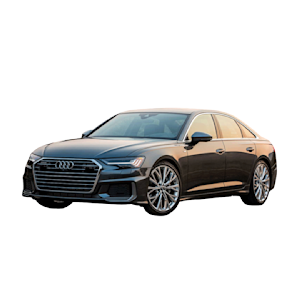
9.3 / 10
Manali
Manali, India
Overview
Discover Manali's snow-capped peaks, adventure activities, ancient temples & vibrant culture with our comprehensive travel guide. Plan your perfect Himalayan getaway now.
Best Selling Manali Tours
Experience the best of Manali with visits to Solang Valley, Rohtang Pass, ancient temples, hot springs, plus thrilling paragliding and river rafting adventures .
Best Family Tours For Manali
Create lasting memories with child-friendly attractions including Solang Valley's gentle activities, wildlife spotting, Hadimba Temple visit, easy nature walks.
Cheapest Tours For Manali
Discover Manali's highlights economically with shared transportation, comfortable guesthouses, guided sightseeing to key attractions, and optional adventure activities.
Rental cars for Manali
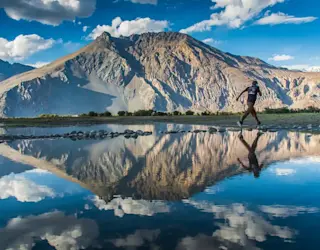
Manali to Nubra Valley taxi | ||
| Honda WRV Petrol MT Sunroof | ₹4500/day | Book Now |
| Alto 800 Petrol | ₹1800/day | Book Now |
| Tata Tiago MT Diesel | ₹1800/day | Book Now |
| Hyundai Aura MT Diesel | ₹2000/day | Book Now |
| Maruti Celerio AT Petrol | ₹2000/day | Book Now |
| Maruti Swift MT Petrol | ₹12/Km | Book Now |
| Hyundai Creata MT Diesel | ₹4000/day | Book Now |
| Hyundai I10 grand MT Petrol | ₹2000/day | Book Now |
| Hyundai i20 MT Diesel: | ₹3200/day | Book Now |
| Mahindra XUV 300, Sunroof MT | ₹4200/day | Book Now |
| Hyundai I10 grant MT Petrol | ₹2200/day | Book Now |
| Maruti S-Cross | ₹3500/day | Book Now |
| Maruti Breeza MT/AT Diesel | ₹3800/day | Book Now |
| Honda Amaze MT Diesel | ₹3200/day | Book Now |
| Maruti Dzire MT Diesel | ₹3000/day | Book Now |
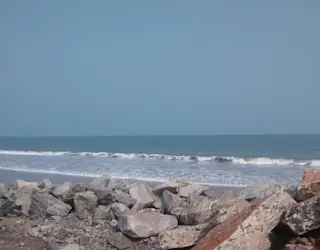
Manali to Kakinada taxi | ||
| Honda WRV Petrol MT Sunroof | ₹4500/day | Book Now |
| Alto 800 Petrol | ₹1800/day | Book Now |
| Tata Tiago MT Diesel | ₹1800/day | Book Now |
| Hyundai Aura MT Diesel | ₹2000/day | Book Now |
| Maruti Celerio AT Petrol | ₹2000/day | Book Now |
| Maruti Swift MT Petrol | ₹12/Km | Book Now |
| Hyundai Creata MT Diesel | ₹4000/day | Book Now |
| Hyundai I10 grand MT Petrol | ₹2000/day | Book Now |
| Hyundai i20 MT Diesel: | ₹3200/day | Book Now |
| Mahindra XUV 300, Sunroof MT | ₹4200/day | Book Now |
| Hyundai I10 grant MT Petrol | ₹2200/day | Book Now |
| Maruti S-Cross | ₹3500/day | Book Now |
| Maruti Breeza MT/AT Diesel | ₹3800/day | Book Now |
| Honda Amaze MT Diesel | ₹3200/day | Book Now |
| Maruti Dzire MT Diesel | ₹3000/day | Book Now |

Manali to Shimla taxi | ||
| Honda WRV Petrol MT Sunroof | ₹4500/day | Book Now |
| Alto 800 Petrol | ₹1800/day | Book Now |
| Tata Tiago MT Diesel | ₹1800/day | Book Now |
| Hyundai Aura MT Diesel | ₹2000/day | Book Now |
| Maruti Celerio AT Petrol | ₹2000/day | Book Now |
| Maruti Swift MT Petrol | ₹12/Km | Book Now |
| Hyundai Creata MT Diesel | ₹4000/day | Book Now |
| Hyundai I10 grand MT Petrol | ₹2000/day | Book Now |
| Hyundai i20 MT Diesel: | ₹3200/day | Book Now |
| Mahindra XUV 300, Sunroof MT | ₹4200/day | Book Now |
| Hyundai I10 grant MT Petrol | ₹2200/day | Book Now |
| Maruti S-Cross | ₹3500/day | Book Now |
| Maruti Breeza MT/AT Diesel | ₹3800/day | Book Now |
| Honda Amaze MT Diesel | ₹3200/day | Book Now |
| Maruti Dzire MT Diesel | ₹3000/day | Book Now |

Manali to Solan taxi | ||
| Honda WRV Petrol MT Sunroof | ₹4500/day | Book Now |
| Alto 800 Petrol | ₹1800/day | Book Now |
| Tata Tiago MT Diesel | ₹1800/day | Book Now |
| Hyundai Aura MT Diesel | ₹2000/day | Book Now |
| Maruti Celerio AT Petrol | ₹2000/day | Book Now |
| Maruti Swift MT Petrol | ₹12/Km | Book Now |
| Hyundai Creata MT Diesel | ₹4000/day | Book Now |
| Hyundai I10 grand MT Petrol | ₹2000/day | Book Now |
| Hyundai i20 MT Diesel: | ₹3200/day | Book Now |
| Mahindra XUV 300, Sunroof MT | ₹4200/day | Book Now |
| Hyundai I10 grant MT Petrol | ₹2200/day | Book Now |
| Maruti S-Cross | ₹3500/day | Book Now |
| Maruti Breeza MT/AT Diesel | ₹3800/day | Book Now |
| Honda Amaze MT Diesel | ₹3200/day | Book Now |
| Maruti Dzire MT Diesel | ₹3000/day | Book Now |
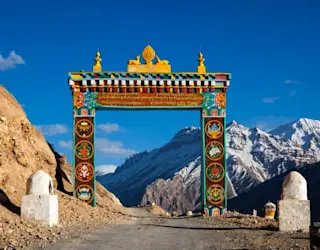
Manali to Leh taxi | ||
| Honda WRV Petrol MT Sunroof | ₹4500/day | Book Now |
| Alto 800 Petrol | ₹1800/day | Book Now |
| Tata Tiago MT Diesel | ₹1800/day | Book Now |
| Hyundai Aura MT Diesel | ₹2000/day | Book Now |
| Maruti Celerio AT Petrol | ₹2000/day | Book Now |
| Maruti Swift MT Petrol | ₹12/Km | Book Now |
| Hyundai Creata MT Diesel | ₹4000/day | Book Now |
| Hyundai I10 grand MT Petrol | ₹2000/day | Book Now |
| Hyundai i20 MT Diesel: | ₹3200/day | Book Now |
| Mahindra XUV 300, Sunroof MT | ₹4200/day | Book Now |
| Hyundai I10 grant MT Petrol | ₹2200/day | Book Now |
| Maruti S-Cross | ₹3500/day | Book Now |
| Maruti Breeza MT/AT Diesel | ₹3800/day | Book Now |
| Honda Amaze MT Diesel | ₹3200/day | Book Now |
| Maruti Dzire MT Diesel | ₹3000/day | Book Now |
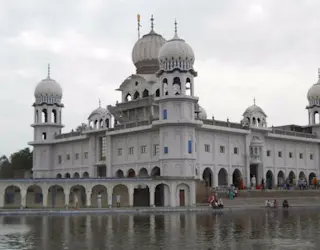
Manali to Faridabad taxi | ||
| Honda WRV Petrol MT Sunroof | ₹4500/day | Book Now |
| Alto 800 Petrol | ₹1800/day | Book Now |
| Tata Tiago MT Diesel | ₹1800/day | Book Now |
| Hyundai Aura MT Diesel | ₹2000/day | Book Now |
| Maruti Celerio AT Petrol | ₹2000/day | Book Now |
| Maruti Swift MT Petrol | ₹12/Km | Book Now |
| Hyundai Creata MT Diesel | ₹4000/day | Book Now |
| Hyundai I10 grand MT Petrol | ₹2000/day | Book Now |
| Hyundai i20 MT Diesel: | ₹3200/day | Book Now |
| Mahindra XUV 300, Sunroof MT | ₹4200/day | Book Now |
| Hyundai I10 grant MT Petrol | ₹2200/day | Book Now |
| Maruti S-Cross | ₹3500/day | Book Now |
| Maruti Breeza MT/AT Diesel | ₹3800/day | Book Now |
| Honda Amaze MT Diesel | ₹3200/day | Book Now |
| Maruti Dzire MT Diesel | ₹3000/day | Book Now |
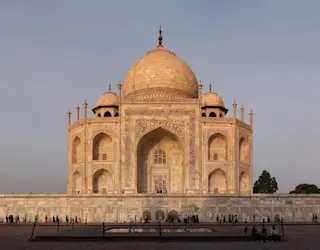
Manali to Taj Mahal taxi | ||
| Honda WRV Petrol MT Sunroof | ₹4500/day | Book Now |
| Alto 800 Petrol | ₹1800/day | Book Now |
| Tata Tiago MT Diesel | ₹1800/day | Book Now |
| Hyundai Aura MT Diesel | ₹2000/day | Book Now |
| Maruti Celerio AT Petrol | ₹2000/day | Book Now |
| Maruti Swift MT Petrol | ₹12/Km | Book Now |
| Hyundai Creata MT Diesel | ₹4000/day | Book Now |
| Hyundai I10 grand MT Petrol | ₹2000/day | Book Now |
| Hyundai i20 MT Diesel: | ₹3200/day | Book Now |
| Mahindra XUV 300, Sunroof MT | ₹4200/day | Book Now |
| Hyundai I10 grant MT Petrol | ₹2200/day | Book Now |
| Maruti S-Cross | ₹3500/day | Book Now |
| Maruti Breeza MT/AT Diesel | ₹3800/day | Book Now |
| Honda Amaze MT Diesel | ₹3200/day | Book Now |
| Maruti Dzire MT Diesel | ₹3000/day | Book Now |
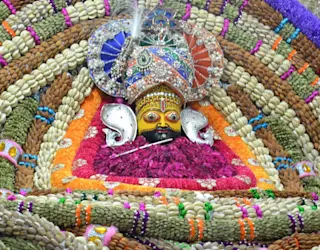
Manali to Khatushyam Temple taxi | ||
| Honda WRV Petrol MT Sunroof | ₹4500/day | Book Now |
| Alto 800 Petrol | ₹1800/day | Book Now |
| Tata Tiago MT Diesel | ₹1800/day | Book Now |
| Hyundai Aura MT Diesel | ₹2000/day | Book Now |
| Maruti Celerio AT Petrol | ₹2000/day | Book Now |
| Maruti Swift MT Petrol | ₹12/Km | Book Now |
| Hyundai Creata MT Diesel | ₹4000/day | Book Now |
| Hyundai I10 grand MT Petrol | ₹2000/day | Book Now |
| Hyundai i20 MT Diesel: | ₹3200/day | Book Now |
| Mahindra XUV 300, Sunroof MT | ₹4200/day | Book Now |
| Hyundai I10 grant MT Petrol | ₹2200/day | Book Now |
| Maruti S-Cross | ₹3500/day | Book Now |
| Maruti Breeza MT/AT Diesel | ₹3800/day | Book Now |
| Honda Amaze MT Diesel | ₹3200/day | Book Now |
| Maruti Dzire MT Diesel | ₹3000/day | Book Now |
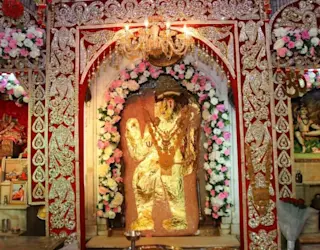
Manali to Mehandipur Balaji taxi | ||
| Honda WRV Petrol MT Sunroof | ₹4500/day | Book Now |
| Alto 800 Petrol | ₹1800/day | Book Now |
| Tata Tiago MT Diesel | ₹1800/day | Book Now |
| Hyundai Aura MT Diesel | ₹2000/day | Book Now |
| Maruti Celerio AT Petrol | ₹2000/day | Book Now |
| Maruti Swift MT Petrol | ₹12/Km | Book Now |
| Hyundai Creata MT Diesel | ₹4000/day | Book Now |
| Hyundai I10 grand MT Petrol | ₹2000/day | Book Now |
| Hyundai i20 MT Diesel: | ₹3200/day | Book Now |
| Mahindra XUV 300, Sunroof MT | ₹4200/day | Book Now |
| Hyundai I10 grant MT Petrol | ₹2200/day | Book Now |
| Maruti S-Cross | ₹3500/day | Book Now |
| Maruti Breeza MT/AT Diesel | ₹3800/day | Book Now |
| Honda Amaze MT Diesel | ₹3200/day | Book Now |
| Maruti Dzire MT Diesel | ₹3000/day | Book Now |
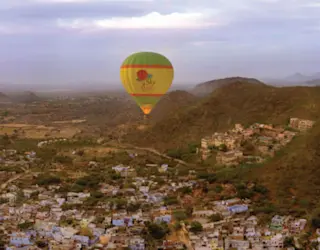
Manali to Neemrana taxi | ||
| Honda WRV Petrol MT Sunroof | ₹4500/day | Book Now |
| Alto 800 Petrol | ₹1800/day | Book Now |
| Tata Tiago MT Diesel | ₹1800/day | Book Now |
| Hyundai Aura MT Diesel | ₹2000/day | Book Now |
| Maruti Celerio AT Petrol | ₹2000/day | Book Now |
| Maruti Swift MT Petrol | ₹12/Km | Book Now |
| Hyundai Creata MT Diesel | ₹4000/day | Book Now |
| Hyundai I10 grand MT Petrol | ₹2000/day | Book Now |
| Hyundai i20 MT Diesel: | ₹3200/day | Book Now |
| Mahindra XUV 300, Sunroof MT | ₹4200/day | Book Now |
| Hyundai I10 grant MT Petrol | ₹2200/day | Book Now |
| Maruti S-Cross | ₹3500/day | Book Now |
| Maruti Breeza MT/AT Diesel | ₹3800/day | Book Now |
| Honda Amaze MT Diesel | ₹3200/day | Book Now |
| Maruti Dzire MT Diesel | ₹3000/day | Book Now |
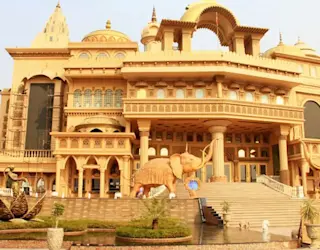
Manali to Gurgaon taxi | ||
| Honda WRV Petrol MT Sunroof | ₹4500/day | Book Now |
| Alto 800 Petrol | ₹1800/day | Book Now |
| Tata Tiago MT Diesel | ₹1800/day | Book Now |
| Hyundai Aura MT Diesel | ₹2000/day | Book Now |
| Maruti Celerio AT Petrol | ₹2000/day | Book Now |
| Maruti Swift MT Petrol | ₹12/Km | Book Now |
| Hyundai Creata MT Diesel | ₹4000/day | Book Now |
| Hyundai I10 grand MT Petrol | ₹2000/day | Book Now |
| Hyundai i20 MT Diesel: | ₹3200/day | Book Now |
| Mahindra XUV 300, Sunroof MT | ₹4200/day | Book Now |
| Hyundai I10 grant MT Petrol | ₹2200/day | Book Now |
| Maruti S-Cross | ₹3500/day | Book Now |
| Maruti Breeza MT/AT Diesel | ₹3800/day | Book Now |
| Honda Amaze MT Diesel | ₹3200/day | Book Now |
| Maruti Dzire MT Diesel | ₹3000/day | Book Now |
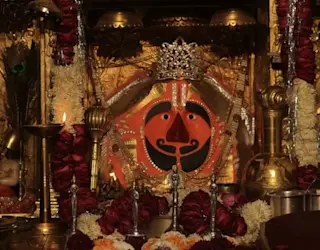
Manali to Salasar Balaji taxi | ||
| Honda WRV Petrol MT Sunroof | ₹4500/day | Book Now |
| Alto 800 Petrol | ₹1800/day | Book Now |
| Tata Tiago MT Diesel | ₹1800/day | Book Now |
| Hyundai Aura MT Diesel | ₹2000/day | Book Now |
| Maruti Celerio AT Petrol | ₹2000/day | Book Now |
| Maruti Swift MT Petrol | ₹12/Km | Book Now |
| Hyundai Creata MT Diesel | ₹4000/day | Book Now |
| Hyundai I10 grand MT Petrol | ₹2000/day | Book Now |
| Hyundai i20 MT Diesel: | ₹3200/day | Book Now |
| Mahindra XUV 300, Sunroof MT | ₹4200/day | Book Now |
| Hyundai I10 grant MT Petrol | ₹2200/day | Book Now |
| Maruti S-Cross | ₹3500/day | Book Now |
| Maruti Breeza MT/AT Diesel | ₹3800/day | Book Now |
| Honda Amaze MT Diesel | ₹3200/day | Book Now |
| Maruti Dzire MT Diesel | ₹3000/day | Book Now |
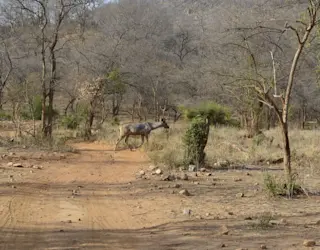
Manali to Sariska National Park taxi | ||
| Honda WRV Petrol MT Sunroof | ₹4500/day | Book Now |
| Alto 800 Petrol | ₹1800/day | Book Now |
| Tata Tiago MT Diesel | ₹1800/day | Book Now |
| Hyundai Aura MT Diesel | ₹2000/day | Book Now |
| Maruti Celerio AT Petrol | ₹2000/day | Book Now |
| Maruti Swift MT Petrol | ₹12/Km | Book Now |
| Hyundai Creata MT Diesel | ₹4000/day | Book Now |
| Hyundai I10 grand MT Petrol | ₹2000/day | Book Now |
| Hyundai i20 MT Diesel: | ₹3200/day | Book Now |
| Mahindra XUV 300, Sunroof MT | ₹4200/day | Book Now |
| Hyundai I10 grant MT Petrol | ₹2200/day | Book Now |
| Maruti S-Cross | ₹3500/day | Book Now |
| Maruti Breeza MT/AT Diesel | ₹3800/day | Book Now |
| Honda Amaze MT Diesel | ₹3200/day | Book Now |
| Maruti Dzire MT Diesel | ₹3000/day | Book Now |
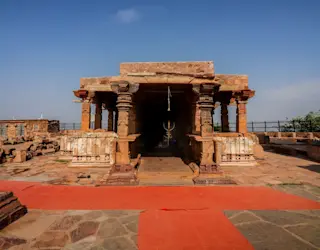
Manali to Sikar taxi | ||
| Honda WRV Petrol MT Sunroof | ₹4500/day | Book Now |
| Alto 800 Petrol | ₹1800/day | Book Now |
| Tata Tiago MT Diesel | ₹1800/day | Book Now |
| Hyundai Aura MT Diesel | ₹2000/day | Book Now |
| Maruti Celerio AT Petrol | ₹2000/day | Book Now |
| Maruti Swift MT Petrol | ₹12/Km | Book Now |
| Hyundai Creata MT Diesel | ₹4000/day | Book Now |
| Hyundai I10 grand MT Petrol | ₹2000/day | Book Now |
| Hyundai i20 MT Diesel: | ₹3200/day | Book Now |
| Mahindra XUV 300, Sunroof MT | ₹4200/day | Book Now |
| Hyundai I10 grant MT Petrol | ₹2200/day | Book Now |
| Maruti S-Cross | ₹3500/day | Book Now |
| Maruti Breeza MT/AT Diesel | ₹3800/day | Book Now |
| Honda Amaze MT Diesel | ₹3200/day | Book Now |
| Maruti Dzire MT Diesel | ₹3000/day | Book Now |

Manali to Prayagraj taxi | ||
| Honda WRV Petrol MT Sunroof | ₹4500/day | Book Now |
| Alto 800 Petrol | ₹1800/day | Book Now |
| Tata Tiago MT Diesel | ₹1800/day | Book Now |
| Hyundai Aura MT Diesel | ₹2000/day | Book Now |
| Maruti Celerio AT Petrol | ₹2000/day | Book Now |
| Maruti Swift MT Petrol | ₹12/Km | Book Now |
| Hyundai Creata MT Diesel | ₹4000/day | Book Now |
| Hyundai I10 grand MT Petrol | ₹2000/day | Book Now |
| Hyundai i20 MT Diesel: | ₹3200/day | Book Now |
| Mahindra XUV 300, Sunroof MT | ₹4200/day | Book Now |
| Hyundai I10 grant MT Petrol | ₹2200/day | Book Now |
| Maruti S-Cross | ₹3500/day | Book Now |
| Maruti Breeza MT/AT Diesel | ₹3800/day | Book Now |
| Honda Amaze MT Diesel | ₹3200/day | Book Now |
| Maruti Dzire MT Diesel | ₹3000/day | Book Now |
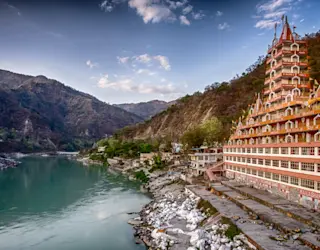
Manali to Rishikesh taxi | ||
| Honda WRV Petrol MT Sunroof | ₹4500/day | Book Now |
| Alto 800 Petrol | ₹1800/day | Book Now |
| Tata Tiago MT Diesel | ₹1800/day | Book Now |
| Hyundai Aura MT Diesel | ₹2000/day | Book Now |
| Maruti Celerio AT Petrol | ₹2000/day | Book Now |
| Maruti Swift MT Petrol | ₹12/Km | Book Now |
| Hyundai Creata MT Diesel | ₹4000/day | Book Now |
| Hyundai I10 grand MT Petrol | ₹2000/day | Book Now |
| Hyundai i20 MT Diesel: | ₹3200/day | Book Now |
| Mahindra XUV 300, Sunroof MT | ₹4200/day | Book Now |
| Hyundai I10 grant MT Petrol | ₹2200/day | Book Now |
| Maruti S-Cross | ₹3500/day | Book Now |
| Maruti Breeza MT/AT Diesel | ₹3800/day | Book Now |
| Honda Amaze MT Diesel | ₹3200/day | Book Now |
| Maruti Dzire MT Diesel | ₹3000/day | Book Now |
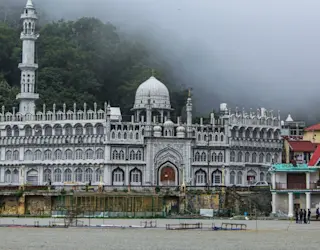
Manali to Nainital taxi | ||
| Honda WRV Petrol MT Sunroof | ₹4500/day | Book Now |
| Alto 800 Petrol | ₹1800/day | Book Now |
| Tata Tiago MT Diesel | ₹1800/day | Book Now |
| Hyundai Aura MT Diesel | ₹2000/day | Book Now |
| Maruti Celerio AT Petrol | ₹2000/day | Book Now |
| Maruti Swift MT Petrol | ₹12/Km | Book Now |
| Hyundai Creata MT Diesel | ₹4000/day | Book Now |
| Hyundai I10 grand MT Petrol | ₹2000/day | Book Now |
| Hyundai i20 MT Diesel: | ₹3200/day | Book Now |
| Mahindra XUV 300, Sunroof MT | ₹4200/day | Book Now |
| Hyundai I10 grant MT Petrol | ₹2200/day | Book Now |
| Maruti S-Cross | ₹3500/day | Book Now |
| Maruti Breeza MT/AT Diesel | ₹3800/day | Book Now |
| Honda Amaze MT Diesel | ₹3200/day | Book Now |
| Maruti Dzire MT Diesel | ₹3000/day | Book Now |

Manali to Mussoorie taxi | ||
| Honda WRV Petrol MT Sunroof | ₹4500/day | Book Now |
| Alto 800 Petrol | ₹1800/day | Book Now |
| Tata Tiago MT Diesel | ₹1800/day | Book Now |
| Hyundai Aura MT Diesel | ₹2000/day | Book Now |
| Maruti Celerio AT Petrol | ₹2000/day | Book Now |
| Maruti Swift MT Petrol | ₹12/Km | Book Now |
| Hyundai Creata MT Diesel | ₹4000/day | Book Now |
| Hyundai I10 grand MT Petrol | ₹2000/day | Book Now |
| Hyundai i20 MT Diesel: | ₹3200/day | Book Now |
| Mahindra XUV 300, Sunroof MT | ₹4200/day | Book Now |
| Hyundai I10 grant MT Petrol | ₹2200/day | Book Now |
| Maruti S-Cross | ₹3500/day | Book Now |
| Maruti Breeza MT/AT Diesel | ₹3800/day | Book Now |
| Honda Amaze MT Diesel | ₹3200/day | Book Now |
| Maruti Dzire MT Diesel | ₹3000/day | Book Now |
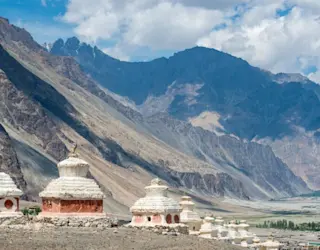
Manali to Dharamshala taxi | ||
| Honda WRV Petrol MT Sunroof | ₹4500/day | Book Now |
| Alto 800 Petrol | ₹1800/day | Book Now |
| Tata Tiago MT Diesel | ₹1800/day | Book Now |
| Hyundai Aura MT Diesel | ₹2000/day | Book Now |
| Maruti Celerio AT Petrol | ₹2000/day | Book Now |
| Maruti Swift MT Petrol | ₹12/Km | Book Now |
| Hyundai Creata MT Diesel | ₹4000/day | Book Now |
| Hyundai I10 grand MT Petrol | ₹2000/day | Book Now |
| Hyundai i20 MT Diesel: | ₹3200/day | Book Now |
| Mahindra XUV 300, Sunroof MT | ₹4200/day | Book Now |
| Hyundai I10 grant MT Petrol | ₹2200/day | Book Now |
| Maruti S-Cross | ₹3500/day | Book Now |
| Maruti Breeza MT/AT Diesel | ₹3800/day | Book Now |
| Honda Amaze MT Diesel | ₹3200/day | Book Now |
| Maruti Dzire MT Diesel | ₹3000/day | Book Now |

Manali to Uttarkashi taxi | ||
| Honda WRV Petrol MT Sunroof | ₹4500/day | Book Now |
| Alto 800 Petrol | ₹1800/day | Book Now |
| Tata Tiago MT Diesel | ₹1800/day | Book Now |
| Hyundai Aura MT Diesel | ₹2000/day | Book Now |
| Maruti Celerio AT Petrol | ₹2000/day | Book Now |
| Maruti Swift MT Petrol | ₹12/Km | Book Now |
| Hyundai Creata MT Diesel | ₹4000/day | Book Now |
| Hyundai I10 grand MT Petrol | ₹2000/day | Book Now |
| Hyundai i20 MT Diesel: | ₹3200/day | Book Now |
| Mahindra XUV 300, Sunroof MT | ₹4200/day | Book Now |
| Hyundai I10 grant MT Petrol | ₹2200/day | Book Now |
| Maruti S-Cross | ₹3500/day | Book Now |
| Maruti Breeza MT/AT Diesel | ₹3800/day | Book Now |
| Honda Amaze MT Diesel | ₹3200/day | Book Now |
| Maruti Dzire MT Diesel | ₹3000/day | Book Now |

Manali to Amritsar taxi | ||
| Honda WRV Petrol MT Sunroof | ₹4500/day | Book Now |
| Alto 800 Petrol | ₹1800/day | Book Now |
| Tata Tiago MT Diesel | ₹1800/day | Book Now |
| Hyundai Aura MT Diesel | ₹2000/day | Book Now |
| Maruti Celerio AT Petrol | ₹2000/day | Book Now |
| Maruti Swift MT Petrol | ₹12/Km | Book Now |
| Hyundai Creata MT Diesel | ₹4000/day | Book Now |
| Hyundai I10 grand MT Petrol | ₹2000/day | Book Now |
| Hyundai i20 MT Diesel: | ₹3200/day | Book Now |
| Mahindra XUV 300, Sunroof MT | ₹4200/day | Book Now |
| Hyundai I10 grant MT Petrol | ₹2200/day | Book Now |
| Maruti S-Cross | ₹3500/day | Book Now |
| Maruti Breeza MT/AT Diesel | ₹3800/day | Book Now |
| Honda Amaze MT Diesel | ₹3200/day | Book Now |
| Maruti Dzire MT Diesel | ₹3000/day | Book Now |

Manali to Dehradun taxi | ||
| Honda WRV Petrol MT Sunroof | ₹4500/day | Book Now |
| Alto 800 Petrol | ₹1800/day | Book Now |
| Tata Tiago MT Diesel | ₹1800/day | Book Now |
| Hyundai Aura MT Diesel | ₹2000/day | Book Now |
| Maruti Celerio AT Petrol | ₹2000/day | Book Now |
| Maruti Swift MT Petrol | ₹12/Km | Book Now |
| Hyundai Creata MT Diesel | ₹4000/day | Book Now |
| Hyundai I10 grand MT Petrol | ₹2000/day | Book Now |
| Hyundai i20 MT Diesel: | ₹3200/day | Book Now |
| Mahindra XUV 300, Sunroof MT | ₹4200/day | Book Now |
| Hyundai I10 grant MT Petrol | ₹2200/day | Book Now |
| Maruti S-Cross | ₹3500/day | Book Now |
| Maruti Breeza MT/AT Diesel | ₹3800/day | Book Now |
| Honda Amaze MT Diesel | ₹3200/day | Book Now |
| Maruti Dzire MT Diesel | ₹3000/day | Book Now |
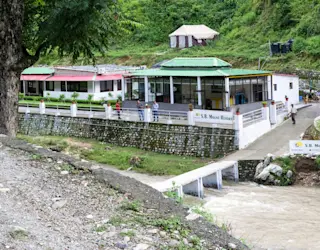
Manali to Lansdowne taxi | ||
| Honda WRV Petrol MT Sunroof | ₹4500/day | Book Now |
| Alto 800 Petrol | ₹1800/day | Book Now |
| Tata Tiago MT Diesel | ₹1800/day | Book Now |
| Hyundai Aura MT Diesel | ₹2000/day | Book Now |
| Maruti Celerio AT Petrol | ₹2000/day | Book Now |
| Maruti Swift MT Petrol | ₹12/Km | Book Now |
| Hyundai Creata MT Diesel | ₹4000/day | Book Now |
| Hyundai I10 grand MT Petrol | ₹2000/day | Book Now |
| Hyundai i20 MT Diesel: | ₹3200/day | Book Now |
| Mahindra XUV 300, Sunroof MT | ₹4200/day | Book Now |
| Hyundai I10 grant MT Petrol | ₹2200/day | Book Now |
| Maruti S-Cross | ₹3500/day | Book Now |
| Maruti Breeza MT/AT Diesel | ₹3800/day | Book Now |
| Honda Amaze MT Diesel | ₹3200/day | Book Now |
| Maruti Dzire MT Diesel | ₹3000/day | Book Now |
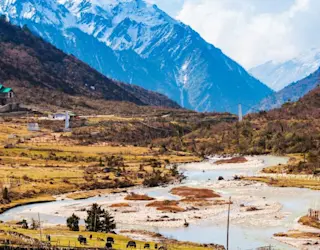
Manali to Chopta taxi | ||
| Honda WRV Petrol MT Sunroof | ₹4500/day | Book Now |
| Alto 800 Petrol | ₹1800/day | Book Now |
| Tata Tiago MT Diesel | ₹1800/day | Book Now |
| Hyundai Aura MT Diesel | ₹2000/day | Book Now |
| Maruti Celerio AT Petrol | ₹2000/day | Book Now |
| Maruti Swift MT Petrol | ₹12/Km | Book Now |
| Hyundai Creata MT Diesel | ₹4000/day | Book Now |
| Hyundai I10 grand MT Petrol | ₹2000/day | Book Now |
| Hyundai i20 MT Diesel: | ₹3200/day | Book Now |
| Mahindra XUV 300, Sunroof MT | ₹4200/day | Book Now |
| Hyundai I10 grant MT Petrol | ₹2200/day | Book Now |
| Maruti S-Cross | ₹3500/day | Book Now |
| Maruti Breeza MT/AT Diesel | ₹3800/day | Book Now |
| Honda Amaze MT Diesel | ₹3200/day | Book Now |
| Maruti Dzire MT Diesel | ₹3000/day | Book Now |

Manali to Varanasi taxi | ||
| Honda WRV Petrol MT Sunroof | ₹4500/day | Book Now |
| Alto 800 Petrol | ₹1800/day | Book Now |
| Tata Tiago MT Diesel | ₹1800/day | Book Now |
| Hyundai Aura MT Diesel | ₹2000/day | Book Now |
| Maruti Celerio AT Petrol | ₹2000/day | Book Now |
| Maruti Swift MT Petrol | ₹12/Km | Book Now |
| Hyundai Creata MT Diesel | ₹4000/day | Book Now |
| Hyundai I10 grand MT Petrol | ₹2000/day | Book Now |
| Hyundai i20 MT Diesel: | ₹3200/day | Book Now |
| Mahindra XUV 300, Sunroof MT | ₹4200/day | Book Now |
| Hyundai I10 grant MT Petrol | ₹2200/day | Book Now |
| Maruti S-Cross | ₹3500/day | Book Now |
| Maruti Breeza MT/AT Diesel | ₹3800/day | Book Now |
| Honda Amaze MT Diesel | ₹3200/day | Book Now |
| Maruti Dzire MT Diesel | ₹3000/day | Book Now |
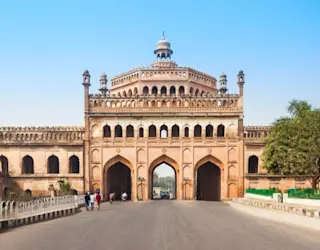
Manali to Lucknow taxi | ||
| Honda WRV Petrol MT Sunroof | ₹4500/day | Book Now |
| Alto 800 Petrol | ₹1800/day | Book Now |
| Tata Tiago MT Diesel | ₹1800/day | Book Now |
| Hyundai Aura MT Diesel | ₹2000/day | Book Now |
| Maruti Celerio AT Petrol | ₹2000/day | Book Now |
| Maruti Swift MT Petrol | ₹12/Km | Book Now |
| Hyundai Creata MT Diesel | ₹4000/day | Book Now |
| Hyundai I10 grand MT Petrol | ₹2000/day | Book Now |
| Hyundai i20 MT Diesel: | ₹3200/day | Book Now |
| Mahindra XUV 300, Sunroof MT | ₹4200/day | Book Now |
| Hyundai I10 grant MT Petrol | ₹2200/day | Book Now |
| Maruti S-Cross | ₹3500/day | Book Now |
| Maruti Breeza MT/AT Diesel | ₹3800/day | Book Now |
| Honda Amaze MT Diesel | ₹3200/day | Book Now |
| Maruti Dzire MT Diesel | ₹3000/day | Book Now |
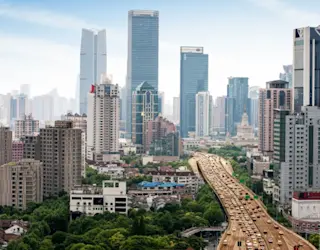
Manali to Noida taxi | ||
| Honda WRV Petrol MT Sunroof | ₹4500/day | Book Now |
| Alto 800 Petrol | ₹1800/day | Book Now |
| Tata Tiago MT Diesel | ₹1800/day | Book Now |
| Hyundai Aura MT Diesel | ₹2000/day | Book Now |
| Maruti Celerio AT Petrol | ₹2000/day | Book Now |
| Maruti Swift MT Petrol | ₹12/Km | Book Now |
| Hyundai Creata MT Diesel | ₹4000/day | Book Now |
| Hyundai I10 grand MT Petrol | ₹2000/day | Book Now |
| Hyundai i20 MT Diesel: | ₹3200/day | Book Now |
| Mahindra XUV 300, Sunroof MT | ₹4200/day | Book Now |
| Hyundai I10 grant MT Petrol | ₹2200/day | Book Now |
| Maruti S-Cross | ₹3500/day | Book Now |
| Maruti Breeza MT/AT Diesel | ₹3800/day | Book Now |
| Honda Amaze MT Diesel | ₹3200/day | Book Now |
| Maruti Dzire MT Diesel | ₹3000/day | Book Now |
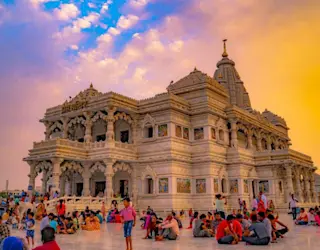
Manali to Mathura taxi | ||
| Honda WRV Petrol MT Sunroof | ₹4500/day | Book Now |
| Alto 800 Petrol | ₹1800/day | Book Now |
| Tata Tiago MT Diesel | ₹1800/day | Book Now |
| Hyundai Aura MT Diesel | ₹2000/day | Book Now |
| Maruti Celerio AT Petrol | ₹2000/day | Book Now |
| Maruti Swift MT Petrol | ₹12/Km | Book Now |
| Hyundai Creata MT Diesel | ₹4000/day | Book Now |
| Hyundai I10 grand MT Petrol | ₹2000/day | Book Now |
| Hyundai i20 MT Diesel: | ₹3200/day | Book Now |
| Mahindra XUV 300, Sunroof MT | ₹4200/day | Book Now |
| Hyundai I10 grant MT Petrol | ₹2200/day | Book Now |
| Maruti S-Cross | ₹3500/day | Book Now |
| Maruti Breeza MT/AT Diesel | ₹3800/day | Book Now |
| Honda Amaze MT Diesel | ₹3200/day | Book Now |
| Maruti Dzire MT Diesel | ₹3000/day | Book Now |
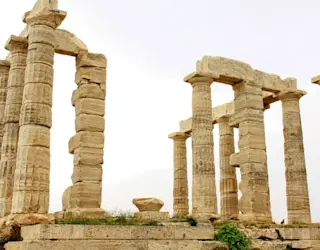
Manali to Akhnoor taxi | ||
| Honda WRV Petrol MT Sunroof | ₹4500/day | Book Now |
| Alto 800 Petrol | ₹1800/day | Book Now |
| Tata Tiago MT Diesel | ₹1800/day | Book Now |
| Hyundai Aura MT Diesel | ₹2000/day | Book Now |
| Maruti Celerio AT Petrol | ₹2000/day | Book Now |
| Maruti Swift MT Petrol | ₹12/Km | Book Now |
| Hyundai Creata MT Diesel | ₹4000/day | Book Now |
| Hyundai I10 grand MT Petrol | ₹2000/day | Book Now |
| Hyundai i20 MT Diesel: | ₹3200/day | Book Now |
| Mahindra XUV 300, Sunroof MT | ₹4200/day | Book Now |
| Hyundai I10 grant MT Petrol | ₹2200/day | Book Now |
| Maruti S-Cross | ₹3500/day | Book Now |
| Maruti Breeza MT/AT Diesel | ₹3800/day | Book Now |
| Honda Amaze MT Diesel | ₹3200/day | Book Now |
| Maruti Dzire MT Diesel | ₹3000/day | Book Now |
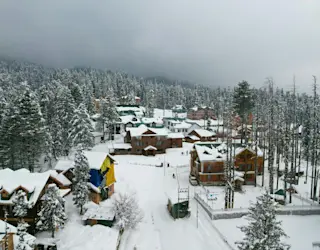
Manali to Gulmarg taxi | ||
| Honda WRV Petrol MT Sunroof | ₹4500/day | Book Now |
| Alto 800 Petrol | ₹1800/day | Book Now |
| Tata Tiago MT Diesel | ₹1800/day | Book Now |
| Hyundai Aura MT Diesel | ₹2000/day | Book Now |
| Maruti Celerio AT Petrol | ₹2000/day | Book Now |
| Maruti Swift MT Petrol | ₹12/Km | Book Now |
| Hyundai Creata MT Diesel | ₹4000/day | Book Now |
| Hyundai I10 grand MT Petrol | ₹2000/day | Book Now |
| Hyundai i20 MT Diesel: | ₹3200/day | Book Now |
| Mahindra XUV 300, Sunroof MT | ₹4200/day | Book Now |
| Hyundai I10 grant MT Petrol | ₹2200/day | Book Now |
| Maruti S-Cross | ₹3500/day | Book Now |
| Maruti Breeza MT/AT Diesel | ₹3800/day | Book Now |
| Honda Amaze MT Diesel | ₹3200/day | Book Now |
| Maruti Dzire MT Diesel | ₹3000/day | Book Now |
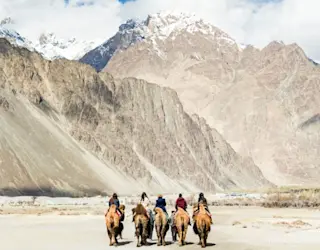
Manali to Kishtwar taxi | ||
| Honda WRV Petrol MT Sunroof | ₹4500/day | Book Now |
| Alto 800 Petrol | ₹1800/day | Book Now |
| Tata Tiago MT Diesel | ₹1800/day | Book Now |
| Hyundai Aura MT Diesel | ₹2000/day | Book Now |
| Maruti Celerio AT Petrol | ₹2000/day | Book Now |
| Maruti Swift MT Petrol | ₹12/Km | Book Now |
| Hyundai Creata MT Diesel | ₹4000/day | Book Now |
| Hyundai I10 grand MT Petrol | ₹2000/day | Book Now |
| Hyundai i20 MT Diesel: | ₹3200/day | Book Now |
| Mahindra XUV 300, Sunroof MT | ₹4200/day | Book Now |
| Hyundai I10 grant MT Petrol | ₹2200/day | Book Now |
| Maruti S-Cross | ₹3500/day | Book Now |
| Maruti Breeza MT/AT Diesel | ₹3800/day | Book Now |
| Honda Amaze MT Diesel | ₹3200/day | Book Now |
| Maruti Dzire MT Diesel | ₹3000/day | Book Now |

Manali to Pahalgam taxi | ||
| Honda WRV Petrol MT Sunroof | ₹4500/day | Book Now |
| Alto 800 Petrol | ₹1800/day | Book Now |
| Tata Tiago MT Diesel | ₹1800/day | Book Now |
| Hyundai Aura MT Diesel | ₹2000/day | Book Now |
| Maruti Celerio AT Petrol | ₹2000/day | Book Now |
| Maruti Swift MT Petrol | ₹12/Km | Book Now |
| Hyundai Creata MT Diesel | ₹4000/day | Book Now |
| Hyundai I10 grand MT Petrol | ₹2000/day | Book Now |
| Hyundai i20 MT Diesel: | ₹3200/day | Book Now |
| Mahindra XUV 300, Sunroof MT | ₹4200/day | Book Now |
| Hyundai I10 grant MT Petrol | ₹2200/day | Book Now |
| Maruti S-Cross | ₹3500/day | Book Now |
| Maruti Breeza MT/AT Diesel | ₹3800/day | Book Now |
| Honda Amaze MT Diesel | ₹3200/day | Book Now |
| Maruti Dzire MT Diesel | ₹3000/day | Book Now |
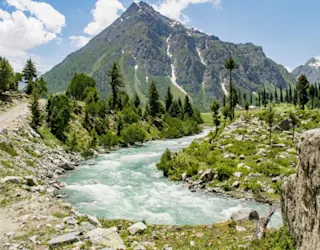
Manali to Srinagar taxi | ||
| Honda WRV Petrol MT Sunroof | ₹4500/day | Book Now |
| Alto 800 Petrol | ₹1800/day | Book Now |
| Tata Tiago MT Diesel | ₹1800/day | Book Now |
| Hyundai Aura MT Diesel | ₹2000/day | Book Now |
| Maruti Celerio AT Petrol | ₹2000/day | Book Now |
| Maruti Swift MT Petrol | ₹12/Km | Book Now |
| Hyundai Creata MT Diesel | ₹4000/day | Book Now |
| Hyundai I10 grand MT Petrol | ₹2000/day | Book Now |
| Hyundai i20 MT Diesel: | ₹3200/day | Book Now |
| Mahindra XUV 300, Sunroof MT | ₹4200/day | Book Now |
| Hyundai I10 grant MT Petrol | ₹2200/day | Book Now |
| Maruti S-Cross | ₹3500/day | Book Now |
| Maruti Breeza MT/AT Diesel | ₹3800/day | Book Now |
| Honda Amaze MT Diesel | ₹3200/day | Book Now |
| Maruti Dzire MT Diesel | ₹3000/day | Book Now |

Manali to North India taxi | ||
| Honda WRV Petrol MT Sunroof | ₹4500/day | Book Now |
| Alto 800 Petrol | ₹1800/day | Book Now |
| Tata Tiago MT Diesel | ₹1800/day | Book Now |
| Hyundai Aura MT Diesel | ₹2000/day | Book Now |
| Maruti Celerio AT Petrol | ₹2000/day | Book Now |
| Maruti Swift MT Petrol | ₹12/Km | Book Now |
| Hyundai Creata MT Diesel | ₹4000/day | Book Now |
| Hyundai I10 grand MT Petrol | ₹2000/day | Book Now |
| Hyundai i20 MT Diesel: | ₹3200/day | Book Now |
| Mahindra XUV 300, Sunroof MT | ₹4200/day | Book Now |
| Hyundai I10 grant MT Petrol | ₹2200/day | Book Now |
| Maruti S-Cross | ₹3500/day | Book Now |
| Maruti Breeza MT/AT Diesel | ₹3800/day | Book Now |
| Honda Amaze MT Diesel | ₹3200/day | Book Now |
| Maruti Dzire MT Diesel | ₹3000/day | Book Now |
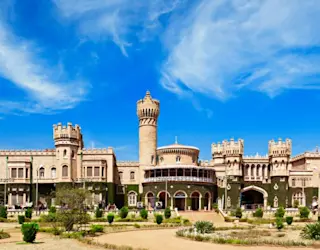
Manali to Gwalior taxi | ||
| Honda WRV Petrol MT Sunroof | ₹4500/day | Book Now |
| Alto 800 Petrol | ₹1800/day | Book Now |
| Tata Tiago MT Diesel | ₹1800/day | Book Now |
| Hyundai Aura MT Diesel | ₹2000/day | Book Now |
| Maruti Celerio AT Petrol | ₹2000/day | Book Now |
| Maruti Swift MT Petrol | ₹12/Km | Book Now |
| Hyundai Creata MT Diesel | ₹4000/day | Book Now |
| Hyundai I10 grand MT Petrol | ₹2000/day | Book Now |
| Hyundai i20 MT Diesel: | ₹3200/day | Book Now |
| Mahindra XUV 300, Sunroof MT | ₹4200/day | Book Now |
| Hyundai I10 grant MT Petrol | ₹2200/day | Book Now |
| Maruti S-Cross | ₹3500/day | Book Now |
| Maruti Breeza MT/AT Diesel | ₹3800/day | Book Now |
| Honda Amaze MT Diesel | ₹3200/day | Book Now |
| Maruti Dzire MT Diesel | ₹3000/day | Book Now |

Manali to Connaught Place taxi | ||
| Honda WRV Petrol MT Sunroof | ₹4500/day | Book Now |
| Alto 800 Petrol | ₹1800/day | Book Now |
| Tata Tiago MT Diesel | ₹1800/day | Book Now |
| Hyundai Aura MT Diesel | ₹2000/day | Book Now |
| Maruti Celerio AT Petrol | ₹2000/day | Book Now |
| Maruti Swift MT Petrol | ₹12/Km | Book Now |
| Hyundai Creata MT Diesel | ₹4000/day | Book Now |
| Hyundai I10 grand MT Petrol | ₹2000/day | Book Now |
| Hyundai i20 MT Diesel: | ₹3200/day | Book Now |
| Mahindra XUV 300, Sunroof MT | ₹4200/day | Book Now |
| Hyundai I10 grant MT Petrol | ₹2200/day | Book Now |
| Maruti S-Cross | ₹3500/day | Book Now |
| Maruti Breeza MT/AT Diesel | ₹3800/day | Book Now |
| Honda Amaze MT Diesel | ₹3200/day | Book Now |
| Maruti Dzire MT Diesel | ₹3000/day | Book Now |

Manali to Dwarka taxi | ||
| Honda WRV Petrol MT Sunroof | ₹4500/day | Book Now |
| Alto 800 Petrol | ₹1800/day | Book Now |
| Tata Tiago MT Diesel | ₹1800/day | Book Now |
| Hyundai Aura MT Diesel | ₹2000/day | Book Now |
| Maruti Celerio AT Petrol | ₹2000/day | Book Now |
| Maruti Swift MT Petrol | ₹12/Km | Book Now |
| Hyundai Creata MT Diesel | ₹4000/day | Book Now |
| Hyundai I10 grand MT Petrol | ₹2000/day | Book Now |
| Hyundai i20 MT Diesel: | ₹3200/day | Book Now |
| Mahindra XUV 300, Sunroof MT | ₹4200/day | Book Now |
| Hyundai I10 grant MT Petrol | ₹2200/day | Book Now |
| Maruti S-Cross | ₹3500/day | Book Now |
| Maruti Breeza MT/AT Diesel | ₹3800/day | Book Now |
| Honda Amaze MT Diesel | ₹3200/day | Book Now |
| Maruti Dzire MT Diesel | ₹3000/day | Book Now |

Manali to Vasant Kunj taxi | ||
| Honda WRV Petrol MT Sunroof | ₹4500/day | Book Now |
| Alto 800 Petrol | ₹1800/day | Book Now |
| Tata Tiago MT Diesel | ₹1800/day | Book Now |
| Hyundai Aura MT Diesel | ₹2000/day | Book Now |
| Maruti Celerio AT Petrol | ₹2000/day | Book Now |
| Maruti Swift MT Petrol | ₹12/Km | Book Now |
| Hyundai Creata MT Diesel | ₹4000/day | Book Now |
| Hyundai I10 grand MT Petrol | ₹2000/day | Book Now |
| Hyundai i20 MT Diesel: | ₹3200/day | Book Now |
| Mahindra XUV 300, Sunroof MT | ₹4200/day | Book Now |
| Hyundai I10 grant MT Petrol | ₹2200/day | Book Now |
| Maruti S-Cross | ₹3500/day | Book Now |
| Maruti Breeza MT/AT Diesel | ₹3800/day | Book Now |
| Honda Amaze MT Diesel | ₹3200/day | Book Now |
| Maruti Dzire MT Diesel | ₹3000/day | Book Now |
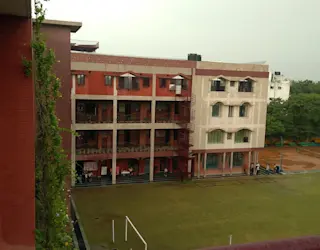
Manali to Greater Kailash taxi | ||
| Honda WRV Petrol MT Sunroof | ₹4500/day | Book Now |
| Alto 800 Petrol | ₹1800/day | Book Now |
| Tata Tiago MT Diesel | ₹1800/day | Book Now |
| Hyundai Aura MT Diesel | ₹2000/day | Book Now |
| Maruti Celerio AT Petrol | ₹2000/day | Book Now |
| Maruti Swift MT Petrol | ₹12/Km | Book Now |
| Hyundai Creata MT Diesel | ₹4000/day | Book Now |
| Hyundai I10 grand MT Petrol | ₹2000/day | Book Now |
| Hyundai i20 MT Diesel: | ₹3200/day | Book Now |
| Mahindra XUV 300, Sunroof MT | ₹4200/day | Book Now |
| Hyundai I10 grant MT Petrol | ₹2200/day | Book Now |
| Maruti S-Cross | ₹3500/day | Book Now |
| Maruti Breeza MT/AT Diesel | ₹3800/day | Book Now |
| Honda Amaze MT Diesel | ₹3200/day | Book Now |
| Maruti Dzire MT Diesel | ₹3000/day | Book Now |
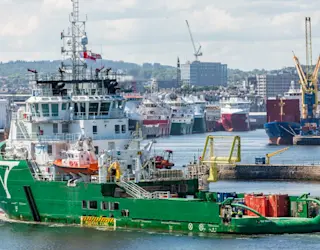
Manali to Dalhousie taxi | ||
| Honda WRV Petrol MT Sunroof | ₹4500/day | Book Now |
| Alto 800 Petrol | ₹1800/day | Book Now |
| Tata Tiago MT Diesel | ₹1800/day | Book Now |
| Hyundai Aura MT Diesel | ₹2000/day | Book Now |
| Maruti Celerio AT Petrol | ₹2000/day | Book Now |
| Maruti Swift MT Petrol | ₹12/Km | Book Now |
| Hyundai Creata MT Diesel | ₹4000/day | Book Now |
| Hyundai I10 grand MT Petrol | ₹2000/day | Book Now |
| Hyundai i20 MT Diesel: | ₹3200/day | Book Now |
| Mahindra XUV 300, Sunroof MT | ₹4200/day | Book Now |
| Hyundai I10 grant MT Petrol | ₹2200/day | Book Now |
| Maruti S-Cross | ₹3500/day | Book Now |
| Maruti Breeza MT/AT Diesel | ₹3800/day | Book Now |
| Honda Amaze MT Diesel | ₹3200/day | Book Now |
| Maruti Dzire MT Diesel | ₹3000/day | Book Now |
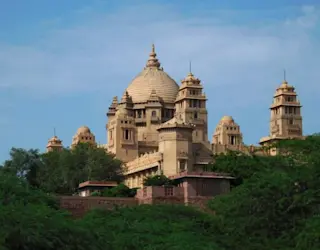
Manali to Karol Bagh taxi | ||
| Honda WRV Petrol MT Sunroof | ₹4500/day | Book Now |
| Alto 800 Petrol | ₹1800/day | Book Now |
| Tata Tiago MT Diesel | ₹1800/day | Book Now |
| Hyundai Aura MT Diesel | ₹2000/day | Book Now |
| Maruti Celerio AT Petrol | ₹2000/day | Book Now |
| Maruti Swift MT Petrol | ₹12/Km | Book Now |
| Hyundai Creata MT Diesel | ₹4000/day | Book Now |
| Hyundai I10 grand MT Petrol | ₹2000/day | Book Now |
| Hyundai i20 MT Diesel: | ₹3200/day | Book Now |
| Mahindra XUV 300, Sunroof MT | ₹4200/day | Book Now |
| Hyundai I10 grant MT Petrol | ₹2200/day | Book Now |
| Maruti S-Cross | ₹3500/day | Book Now |
| Maruti Breeza MT/AT Diesel | ₹3800/day | Book Now |
| Honda Amaze MT Diesel | ₹3200/day | Book Now |
| Maruti Dzire MT Diesel | ₹3000/day | Book Now |
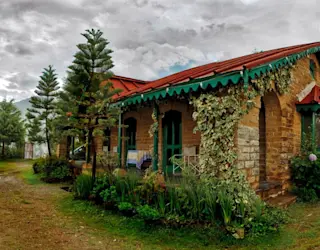
Manali to Ramgarh taxi | ||
| Honda WRV Petrol MT Sunroof | ₹4500/day | Book Now |
| Alto 800 Petrol | ₹1800/day | Book Now |
| Tata Tiago MT Diesel | ₹1800/day | Book Now |
| Hyundai Aura MT Diesel | ₹2000/day | Book Now |
| Maruti Celerio AT Petrol | ₹2000/day | Book Now |
| Maruti Swift MT Petrol | ₹12/Km | Book Now |
| Hyundai Creata MT Diesel | ₹4000/day | Book Now |
| Hyundai I10 grand MT Petrol | ₹2000/day | Book Now |
| Hyundai i20 MT Diesel: | ₹3200/day | Book Now |
| Mahindra XUV 300, Sunroof MT | ₹4200/day | Book Now |
| Hyundai I10 grant MT Petrol | ₹2200/day | Book Now |
| Maruti S-Cross | ₹3500/day | Book Now |
| Maruti Breeza MT/AT Diesel | ₹3800/day | Book Now |
| Honda Amaze MT Diesel | ₹3200/day | Book Now |
| Maruti Dzire MT Diesel | ₹3000/day | Book Now |

Manali to Kukas taxi | ||
| Honda WRV Petrol MT Sunroof | ₹4500/day | Book Now |
| Alto 800 Petrol | ₹1800/day | Book Now |
| Tata Tiago MT Diesel | ₹1800/day | Book Now |
| Hyundai Aura MT Diesel | ₹2000/day | Book Now |
| Maruti Celerio AT Petrol | ₹2000/day | Book Now |
| Maruti Swift MT Petrol | ₹12/Km | Book Now |
| Hyundai Creata MT Diesel | ₹4000/day | Book Now |
| Hyundai I10 grand MT Petrol | ₹2000/day | Book Now |
| Hyundai i20 MT Diesel: | ₹3200/day | Book Now |
| Mahindra XUV 300, Sunroof MT | ₹4200/day | Book Now |
| Hyundai I10 grant MT Petrol | ₹2200/day | Book Now |
| Maruti S-Cross | ₹3500/day | Book Now |
| Maruti Breeza MT/AT Diesel | ₹3800/day | Book Now |
| Honda Amaze MT Diesel | ₹3200/day | Book Now |
| Maruti Dzire MT Diesel | ₹3000/day | Book Now |
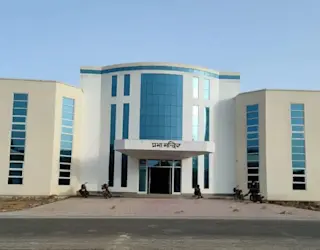
Manali to Banasthali taxi | ||
| Honda WRV Petrol MT Sunroof | ₹4500/day | Book Now |
| Alto 800 Petrol | ₹1800/day | Book Now |
| Tata Tiago MT Diesel | ₹1800/day | Book Now |
| Hyundai Aura MT Diesel | ₹2000/day | Book Now |
| Maruti Celerio AT Petrol | ₹2000/day | Book Now |
| Maruti Swift MT Petrol | ₹12/Km | Book Now |
| Hyundai Creata MT Diesel | ₹4000/day | Book Now |
| Hyundai I10 grand MT Petrol | ₹2000/day | Book Now |
| Hyundai i20 MT Diesel: | ₹3200/day | Book Now |
| Mahindra XUV 300, Sunroof MT | ₹4200/day | Book Now |
| Hyundai I10 grant MT Petrol | ₹2200/day | Book Now |
| Maruti S-Cross | ₹3500/day | Book Now |
| Maruti Breeza MT/AT Diesel | ₹3800/day | Book Now |
| Honda Amaze MT Diesel | ₹3200/day | Book Now |
| Maruti Dzire MT Diesel | ₹3000/day | Book Now |
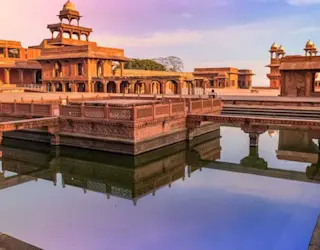
Manali to Fatehpur Sikri taxi | ||
| Honda WRV Petrol MT Sunroof | ₹4500/day | Book Now |
| Alto 800 Petrol | ₹1800/day | Book Now |
| Tata Tiago MT Diesel | ₹1800/day | Book Now |
| Hyundai Aura MT Diesel | ₹2000/day | Book Now |
| Maruti Celerio AT Petrol | ₹2000/day | Book Now |
| Maruti Swift MT Petrol | ₹12/Km | Book Now |
| Hyundai Creata MT Diesel | ₹4000/day | Book Now |
| Hyundai I10 grand MT Petrol | ₹2000/day | Book Now |
| Hyundai i20 MT Diesel: | ₹3200/day | Book Now |
| Mahindra XUV 300, Sunroof MT | ₹4200/day | Book Now |
| Hyundai I10 grant MT Petrol | ₹2200/day | Book Now |
| Maruti S-Cross | ₹3500/day | Book Now |
| Maruti Breeza MT/AT Diesel | ₹3800/day | Book Now |
| Honda Amaze MT Diesel | ₹3200/day | Book Now |
| Maruti Dzire MT Diesel | ₹3000/day | Book Now |
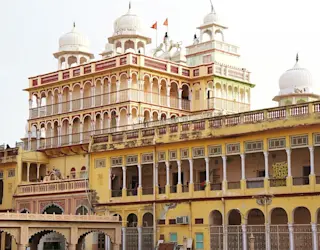
Manali to Jhunjhunu taxi | ||
| Honda WRV Petrol MT Sunroof | ₹4500/day | Book Now |
| Alto 800 Petrol | ₹1800/day | Book Now |
| Tata Tiago MT Diesel | ₹1800/day | Book Now |
| Hyundai Aura MT Diesel | ₹2000/day | Book Now |
| Maruti Celerio AT Petrol | ₹2000/day | Book Now |
| Maruti Swift MT Petrol | ₹12/Km | Book Now |
| Hyundai Creata MT Diesel | ₹4000/day | Book Now |
| Hyundai I10 grand MT Petrol | ₹2000/day | Book Now |
| Hyundai i20 MT Diesel: | ₹3200/day | Book Now |
| Mahindra XUV 300, Sunroof MT | ₹4200/day | Book Now |
| Hyundai I10 grant MT Petrol | ₹2200/day | Book Now |
| Maruti S-Cross | ₹3500/day | Book Now |
| Maruti Breeza MT/AT Diesel | ₹3800/day | Book Now |
| Honda Amaze MT Diesel | ₹3200/day | Book Now |
| Maruti Dzire MT Diesel | ₹3000/day | Book Now |
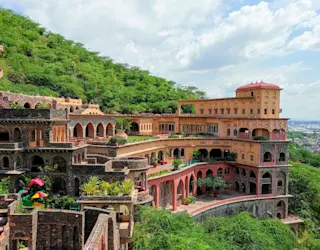
Manali to Kotputli taxi | ||
| Honda WRV Petrol MT Sunroof | ₹4500/day | Book Now |
| Alto 800 Petrol | ₹1800/day | Book Now |
| Tata Tiago MT Diesel | ₹1800/day | Book Now |
| Hyundai Aura MT Diesel | ₹2000/day | Book Now |
| Maruti Celerio AT Petrol | ₹2000/day | Book Now |
| Maruti Swift MT Petrol | ₹12/Km | Book Now |
| Hyundai Creata MT Diesel | ₹4000/day | Book Now |
| Hyundai I10 grand MT Petrol | ₹2000/day | Book Now |
| Hyundai i20 MT Diesel: | ₹3200/day | Book Now |
| Mahindra XUV 300, Sunroof MT | ₹4200/day | Book Now |
| Hyundai I10 grant MT Petrol | ₹2200/day | Book Now |
| Maruti S-Cross | ₹3500/day | Book Now |
| Maruti Breeza MT/AT Diesel | ₹3800/day | Book Now |
| Honda Amaze MT Diesel | ₹3200/day | Book Now |
| Maruti Dzire MT Diesel | ₹3000/day | Book Now |

Manali to Sujangarh taxi | ||
| Honda WRV Petrol MT Sunroof | ₹4500/day | Book Now |
| Alto 800 Petrol | ₹1800/day | Book Now |
| Tata Tiago MT Diesel | ₹1800/day | Book Now |
| Hyundai Aura MT Diesel | ₹2000/day | Book Now |
| Maruti Celerio AT Petrol | ₹2000/day | Book Now |
| Maruti Swift MT Petrol | ₹12/Km | Book Now |
| Hyundai Creata MT Diesel | ₹4000/day | Book Now |
| Hyundai I10 grand MT Petrol | ₹2000/day | Book Now |
| Hyundai i20 MT Diesel: | ₹3200/day | Book Now |
| Mahindra XUV 300, Sunroof MT | ₹4200/day | Book Now |
| Hyundai I10 grant MT Petrol | ₹2200/day | Book Now |
| Maruti S-Cross | ₹3500/day | Book Now |
| Maruti Breeza MT/AT Diesel | ₹3800/day | Book Now |
| Honda Amaze MT Diesel | ₹3200/day | Book Now |
| Maruti Dzire MT Diesel | ₹3000/day | Book Now |
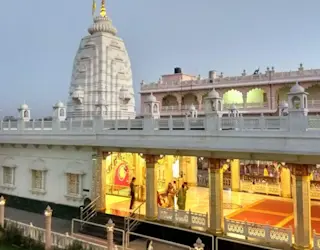
Manali to Rani Sati Dadi taxi | ||
| Honda WRV Petrol MT Sunroof | ₹4500/day | Book Now |
| Alto 800 Petrol | ₹1800/day | Book Now |
| Tata Tiago MT Diesel | ₹1800/day | Book Now |
| Hyundai Aura MT Diesel | ₹2000/day | Book Now |
| Maruti Celerio AT Petrol | ₹2000/day | Book Now |
| Maruti Swift MT Petrol | ₹12/Km | Book Now |
| Hyundai Creata MT Diesel | ₹4000/day | Book Now |
| Hyundai I10 grand MT Petrol | ₹2000/day | Book Now |
| Hyundai i20 MT Diesel: | ₹3200/day | Book Now |
| Mahindra XUV 300, Sunroof MT | ₹4200/day | Book Now |
| Hyundai I10 grant MT Petrol | ₹2200/day | Book Now |
| Maruti S-Cross | ₹3500/day | Book Now |
| Maruti Breeza MT/AT Diesel | ₹3800/day | Book Now |
| Honda Amaze MT Diesel | ₹3200/day | Book Now |
| Maruti Dzire MT Diesel | ₹3000/day | Book Now |

Manali to Chhapar Sanctuary taxi | ||
| Honda WRV Petrol MT Sunroof | ₹4500/day | Book Now |
| Alto 800 Petrol | ₹1800/day | Book Now |
| Tata Tiago MT Diesel | ₹1800/day | Book Now |
| Hyundai Aura MT Diesel | ₹2000/day | Book Now |
| Maruti Celerio AT Petrol | ₹2000/day | Book Now |
| Maruti Swift MT Petrol | ₹12/Km | Book Now |
| Hyundai Creata MT Diesel | ₹4000/day | Book Now |
| Hyundai I10 grand MT Petrol | ₹2000/day | Book Now |
| Hyundai i20 MT Diesel: | ₹3200/day | Book Now |
| Mahindra XUV 300, Sunroof MT | ₹4200/day | Book Now |
| Hyundai I10 grant MT Petrol | ₹2200/day | Book Now |
| Maruti S-Cross | ₹3500/day | Book Now |
| Maruti Breeza MT/AT Diesel | ₹3800/day | Book Now |
| Honda Amaze MT Diesel | ₹3200/day | Book Now |
| Maruti Dzire MT Diesel | ₹3000/day | Book Now |
Manali to Shri Mahavirji taxi | ||
| Honda WRV Petrol MT Sunroof | ₹4500/day | Book Now |
| Alto 800 Petrol | ₹1800/day | Book Now |
| Tata Tiago MT Diesel | ₹1800/day | Book Now |
| Hyundai Aura MT Diesel | ₹2000/day | Book Now |
| Maruti Celerio AT Petrol | ₹2000/day | Book Now |
| Maruti Swift MT Petrol | ₹12/Km | Book Now |
| Hyundai Creata MT Diesel | ₹4000/day | Book Now |
| Hyundai I10 grand MT Petrol | ₹2000/day | Book Now |
| Hyundai i20 MT Diesel: | ₹3200/day | Book Now |
| Mahindra XUV 300, Sunroof MT | ₹4200/day | Book Now |
| Hyundai I10 grant MT Petrol | ₹2200/day | Book Now |
| Maruti S-Cross | ₹3500/day | Book Now |
| Maruti Breeza MT/AT Diesel | ₹3800/day | Book Now |
| Honda Amaze MT Diesel | ₹3200/day | Book Now |
| Maruti Dzire MT Diesel | ₹3000/day | Book Now |
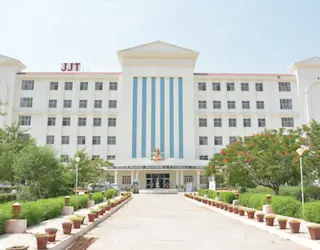
Manali to Jagdishprasad Jhabarmal Tibrewala University taxi | ||
| Honda WRV Petrol MT Sunroof | ₹4500/day | Book Now |
| Alto 800 Petrol | ₹1800/day | Book Now |
| Tata Tiago MT Diesel | ₹1800/day | Book Now |
| Hyundai Aura MT Diesel | ₹2000/day | Book Now |
| Maruti Celerio AT Petrol | ₹2000/day | Book Now |
| Maruti Swift MT Petrol | ₹12/Km | Book Now |
| Hyundai Creata MT Diesel | ₹4000/day | Book Now |
| Hyundai I10 grand MT Petrol | ₹2000/day | Book Now |
| Hyundai i20 MT Diesel: | ₹3200/day | Book Now |
| Mahindra XUV 300, Sunroof MT | ₹4200/day | Book Now |
| Hyundai I10 grant MT Petrol | ₹2200/day | Book Now |
| Maruti S-Cross | ₹3500/day | Book Now |
| Maruti Breeza MT/AT Diesel | ₹3800/day | Book Now |
| Honda Amaze MT Diesel | ₹3200/day | Book Now |
| Maruti Dzire MT Diesel | ₹3000/day | Book Now |
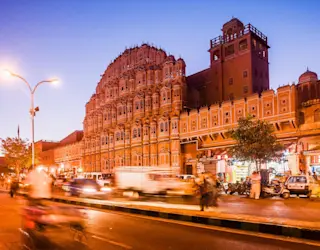
Manali to Jaipur taxi | ||
| Honda WRV Petrol MT Sunroof | ₹4500/day | Book Now |
| Alto 800 Petrol | ₹1800/day | Book Now |
| Tata Tiago MT Diesel | ₹1800/day | Book Now |
| Hyundai Aura MT Diesel | ₹2000/day | Book Now |
| Maruti Celerio AT Petrol | ₹2000/day | Book Now |
| Maruti Swift MT Petrol | ₹12/Km | Book Now |
| Hyundai Creata MT Diesel | ₹4000/day | Book Now |
| Hyundai I10 grand MT Petrol | ₹2000/day | Book Now |
| Hyundai i20 MT Diesel: | ₹3200/day | Book Now |
| Mahindra XUV 300, Sunroof MT | ₹4200/day | Book Now |
| Hyundai I10 grant MT Petrol | ₹2200/day | Book Now |
| Maruti S-Cross | ₹3500/day | Book Now |
| Maruti Breeza MT/AT Diesel | ₹3800/day | Book Now |
| Honda Amaze MT Diesel | ₹3200/day | Book Now |
| Maruti Dzire MT Diesel | ₹3000/day | Book Now |

Manali to Alwar taxi | ||
| Honda WRV Petrol MT Sunroof | ₹4500/day | Book Now |
| Alto 800 Petrol | ₹1800/day | Book Now |
| Tata Tiago MT Diesel | ₹1800/day | Book Now |
| Hyundai Aura MT Diesel | ₹2000/day | Book Now |
| Maruti Celerio AT Petrol | ₹2000/day | Book Now |
| Maruti Swift MT Petrol | ₹12/Km | Book Now |
| Hyundai Creata MT Diesel | ₹4000/day | Book Now |
| Hyundai I10 grand MT Petrol | ₹2000/day | Book Now |
| Hyundai i20 MT Diesel: | ₹3200/day | Book Now |
| Mahindra XUV 300, Sunroof MT | ₹4200/day | Book Now |
| Hyundai I10 grant MT Petrol | ₹2200/day | Book Now |
| Maruti S-Cross | ₹3500/day | Book Now |
| Maruti Breeza MT/AT Diesel | ₹3800/day | Book Now |
| Honda Amaze MT Diesel | ₹3200/day | Book Now |
| Maruti Dzire MT Diesel | ₹3000/day | Book Now |
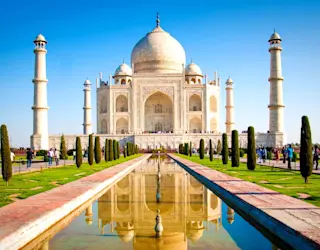
Manali to Agra taxi | ||
| Honda WRV Petrol MT Sunroof | ₹4500/day | Book Now |
| Alto 800 Petrol | ₹1800/day | Book Now |
| Tata Tiago MT Diesel | ₹1800/day | Book Now |
| Hyundai Aura MT Diesel | ₹2000/day | Book Now |
| Maruti Celerio AT Petrol | ₹2000/day | Book Now |
| Maruti Swift MT Petrol | ₹12/Km | Book Now |
| Hyundai Creata MT Diesel | ₹4000/day | Book Now |
| Hyundai I10 grand MT Petrol | ₹2000/day | Book Now |
| Hyundai i20 MT Diesel: | ₹3200/day | Book Now |
| Mahindra XUV 300, Sunroof MT | ₹4200/day | Book Now |
| Hyundai I10 grant MT Petrol | ₹2200/day | Book Now |
| Maruti S-Cross | ₹3500/day | Book Now |
| Maruti Breeza MT/AT Diesel | ₹3800/day | Book Now |
| Honda Amaze MT Diesel | ₹3200/day | Book Now |
| Maruti Dzire MT Diesel | ₹3000/day | Book Now |

Manali to Sanganer taxi | ||
| Honda WRV Petrol MT Sunroof | ₹4500/day | Book Now |
| Alto 800 Petrol | ₹1800/day | Book Now |
| Tata Tiago MT Diesel | ₹1800/day | Book Now |
| Hyundai Aura MT Diesel | ₹2000/day | Book Now |
| Maruti Celerio AT Petrol | ₹2000/day | Book Now |
| Maruti Swift MT Petrol | ₹12/Km | Book Now |
| Hyundai Creata MT Diesel | ₹4000/day | Book Now |
| Hyundai I10 grand MT Petrol | ₹2000/day | Book Now |
| Hyundai i20 MT Diesel: | ₹3200/day | Book Now |
| Mahindra XUV 300, Sunroof MT | ₹4200/day | Book Now |
| Hyundai I10 grant MT Petrol | ₹2200/day | Book Now |
| Maruti S-Cross | ₹3500/day | Book Now |
| Maruti Breeza MT/AT Diesel | ₹3800/day | Book Now |
| Honda Amaze MT Diesel | ₹3200/day | Book Now |
| Maruti Dzire MT Diesel | ₹3000/day | Book Now |
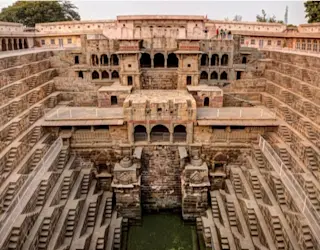
Manali to Chand Baori taxi | ||
| Honda WRV Petrol MT Sunroof | ₹4500/day | Book Now |
| Alto 800 Petrol | ₹1800/day | Book Now |
| Tata Tiago MT Diesel | ₹1800/day | Book Now |
| Hyundai Aura MT Diesel | ₹2000/day | Book Now |
| Maruti Celerio AT Petrol | ₹2000/day | Book Now |
| Maruti Swift MT Petrol | ₹12/Km | Book Now |
| Hyundai Creata MT Diesel | ₹4000/day | Book Now |
| Hyundai I10 grand MT Petrol | ₹2000/day | Book Now |
| Hyundai i20 MT Diesel: | ₹3200/day | Book Now |
| Mahindra XUV 300, Sunroof MT | ₹4200/day | Book Now |
| Hyundai I10 grant MT Petrol | ₹2200/day | Book Now |
| Maruti S-Cross | ₹3500/day | Book Now |
| Maruti Breeza MT/AT Diesel | ₹3800/day | Book Now |
| Honda Amaze MT Diesel | ₹3200/day | Book Now |
| Maruti Dzire MT Diesel | ₹3000/day | Book Now |

Manali to Malpura taxi | ||
| Honda WRV Petrol MT Sunroof | ₹4500/day | Book Now |
| Alto 800 Petrol | ₹1800/day | Book Now |
| Tata Tiago MT Diesel | ₹1800/day | Book Now |
| Hyundai Aura MT Diesel | ₹2000/day | Book Now |
| Maruti Celerio AT Petrol | ₹2000/day | Book Now |
| Maruti Swift MT Petrol | ₹12/Km | Book Now |
| Hyundai Creata MT Diesel | ₹4000/day | Book Now |
| Hyundai I10 grand MT Petrol | ₹2000/day | Book Now |
| Hyundai i20 MT Diesel: | ₹3200/day | Book Now |
| Mahindra XUV 300, Sunroof MT | ₹4200/day | Book Now |
| Hyundai I10 grant MT Petrol | ₹2200/day | Book Now |
| Maruti S-Cross | ₹3500/day | Book Now |
| Maruti Breeza MT/AT Diesel | ₹3800/day | Book Now |
| Honda Amaze MT Diesel | ₹3200/day | Book Now |
| Maruti Dzire MT Diesel | ₹3000/day | Book Now |
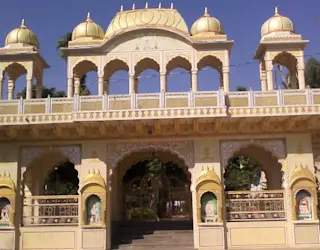
Manali to Triveni Dham taxi | ||
| Honda WRV Petrol MT Sunroof | ₹4500/day | Book Now |
| Alto 800 Petrol | ₹1800/day | Book Now |
| Tata Tiago MT Diesel | ₹1800/day | Book Now |
| Hyundai Aura MT Diesel | ₹2000/day | Book Now |
| Maruti Celerio AT Petrol | ₹2000/day | Book Now |
| Maruti Swift MT Petrol | ₹12/Km | Book Now |
| Hyundai Creata MT Diesel | ₹4000/day | Book Now |
| Hyundai I10 grand MT Petrol | ₹2000/day | Book Now |
| Hyundai i20 MT Diesel: | ₹3200/day | Book Now |
| Mahindra XUV 300, Sunroof MT | ₹4200/day | Book Now |
| Hyundai I10 grant MT Petrol | ₹2200/day | Book Now |
| Maruti S-Cross | ₹3500/day | Book Now |
| Maruti Breeza MT/AT Diesel | ₹3800/day | Book Now |
| Honda Amaze MT Diesel | ₹3200/day | Book Now |
| Maruti Dzire MT Diesel | ₹3000/day | Book Now |
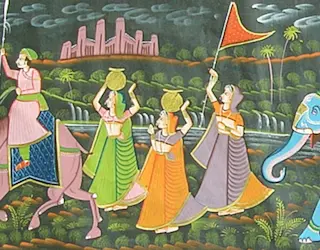
Manali to Kishangarh taxi | ||
| Honda WRV Petrol MT Sunroof | ₹4500/day | Book Now |
| Alto 800 Petrol | ₹1800/day | Book Now |
| Tata Tiago MT Diesel | ₹1800/day | Book Now |
| Hyundai Aura MT Diesel | ₹2000/day | Book Now |
| Maruti Celerio AT Petrol | ₹2000/day | Book Now |
| Maruti Swift MT Petrol | ₹12/Km | Book Now |
| Hyundai Creata MT Diesel | ₹4000/day | Book Now |
| Hyundai I10 grand MT Petrol | ₹2000/day | Book Now |
| Hyundai i20 MT Diesel: | ₹3200/day | Book Now |
| Mahindra XUV 300, Sunroof MT | ₹4200/day | Book Now |
| Hyundai I10 grant MT Petrol | ₹2200/day | Book Now |
| Maruti S-Cross | ₹3500/day | Book Now |
| Maruti Breeza MT/AT Diesel | ₹3800/day | Book Now |
| Honda Amaze MT Diesel | ₹3200/day | Book Now |
| Maruti Dzire MT Diesel | ₹3000/day | Book Now |

Manali to Ajmer taxi | ||
| Honda WRV Petrol MT Sunroof | ₹4500/day | Book Now |
| Alto 800 Petrol | ₹1800/day | Book Now |
| Tata Tiago MT Diesel | ₹1800/day | Book Now |
| Hyundai Aura MT Diesel | ₹2000/day | Book Now |
| Maruti Celerio AT Petrol | ₹2000/day | Book Now |
| Maruti Swift MT Petrol | ₹12/Km | Book Now |
| Hyundai Creata MT Diesel | ₹4000/day | Book Now |
| Hyundai I10 grand MT Petrol | ₹2000/day | Book Now |
| Hyundai i20 MT Diesel: | ₹3200/day | Book Now |
| Mahindra XUV 300, Sunroof MT | ₹4200/day | Book Now |
| Hyundai I10 grant MT Petrol | ₹2200/day | Book Now |
| Maruti S-Cross | ₹3500/day | Book Now |
| Maruti Breeza MT/AT Diesel | ₹3800/day | Book Now |
| Honda Amaze MT Diesel | ₹3200/day | Book Now |
| Maruti Dzire MT Diesel | ₹3000/day | Book Now |

Manali to Pushkar taxi | ||
| Honda WRV Petrol MT Sunroof | ₹4500/day | Book Now |
| Alto 800 Petrol | ₹1800/day | Book Now |
| Tata Tiago MT Diesel | ₹1800/day | Book Now |
| Hyundai Aura MT Diesel | ₹2000/day | Book Now |
| Maruti Celerio AT Petrol | ₹2000/day | Book Now |
| Maruti Swift MT Petrol | ₹12/Km | Book Now |
| Hyundai Creata MT Diesel | ₹4000/day | Book Now |
| Hyundai I10 grand MT Petrol | ₹2000/day | Book Now |
| Hyundai i20 MT Diesel: | ₹3200/day | Book Now |
| Mahindra XUV 300, Sunroof MT | ₹4200/day | Book Now |
| Hyundai I10 grant MT Petrol | ₹2200/day | Book Now |
| Maruti S-Cross | ₹3500/day | Book Now |
| Maruti Breeza MT/AT Diesel | ₹3800/day | Book Now |
| Honda Amaze MT Diesel | ₹3200/day | Book Now |
| Maruti Dzire MT Diesel | ₹3000/day | Book Now |
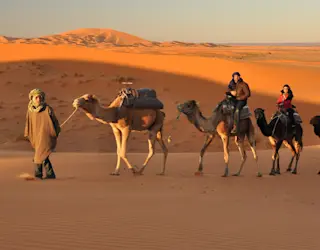
Manali to Jaisalmer taxi | ||
| Honda WRV Petrol MT Sunroof | ₹4500/day | Book Now |
| Alto 800 Petrol | ₹1800/day | Book Now |
| Tata Tiago MT Diesel | ₹1800/day | Book Now |
| Hyundai Aura MT Diesel | ₹2000/day | Book Now |
| Maruti Celerio AT Petrol | ₹2000/day | Book Now |
| Maruti Swift MT Petrol | ₹12/Km | Book Now |
| Hyundai Creata MT Diesel | ₹4000/day | Book Now |
| Hyundai I10 grand MT Petrol | ₹2000/day | Book Now |
| Hyundai i20 MT Diesel: | ₹3200/day | Book Now |
| Mahindra XUV 300, Sunroof MT | ₹4200/day | Book Now |
| Hyundai I10 grant MT Petrol | ₹2200/day | Book Now |
| Maruti S-Cross | ₹3500/day | Book Now |
| Maruti Breeza MT/AT Diesel | ₹3800/day | Book Now |
| Honda Amaze MT Diesel | ₹3200/day | Book Now |
| Maruti Dzire MT Diesel | ₹3000/day | Book Now |

Manali to Bundi taxi | ||
| Honda WRV Petrol MT Sunroof | ₹4500/day | Book Now |
| Alto 800 Petrol | ₹1800/day | Book Now |
| Tata Tiago MT Diesel | ₹1800/day | Book Now |
| Hyundai Aura MT Diesel | ₹2000/day | Book Now |
| Maruti Celerio AT Petrol | ₹2000/day | Book Now |
| Maruti Swift MT Petrol | ₹12/Km | Book Now |
| Hyundai Creata MT Diesel | ₹4000/day | Book Now |
| Hyundai I10 grand MT Petrol | ₹2000/day | Book Now |
| Hyundai i20 MT Diesel: | ₹3200/day | Book Now |
| Mahindra XUV 300, Sunroof MT | ₹4200/day | Book Now |
| Hyundai I10 grant MT Petrol | ₹2200/day | Book Now |
| Maruti S-Cross | ₹3500/day | Book Now |
| Maruti Breeza MT/AT Diesel | ₹3800/day | Book Now |
| Honda Amaze MT Diesel | ₹3200/day | Book Now |
| Maruti Dzire MT Diesel | ₹3000/day | Book Now |
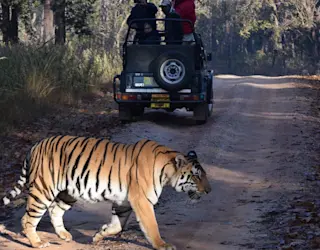
Manali to Ranthambore taxi | ||
| Honda WRV Petrol MT Sunroof | ₹4500/day | Book Now |
| Alto 800 Petrol | ₹1800/day | Book Now |
| Tata Tiago MT Diesel | ₹1800/day | Book Now |
| Hyundai Aura MT Diesel | ₹2000/day | Book Now |
| Maruti Celerio AT Petrol | ₹2000/day | Book Now |
| Maruti Swift MT Petrol | ₹12/Km | Book Now |
| Hyundai Creata MT Diesel | ₹4000/day | Book Now |
| Hyundai I10 grand MT Petrol | ₹2000/day | Book Now |
| Hyundai i20 MT Diesel: | ₹3200/day | Book Now |
| Mahindra XUV 300, Sunroof MT | ₹4200/day | Book Now |
| Hyundai I10 grant MT Petrol | ₹2200/day | Book Now |
| Maruti S-Cross | ₹3500/day | Book Now |
| Maruti Breeza MT/AT Diesel | ₹3800/day | Book Now |
| Honda Amaze MT Diesel | ₹3200/day | Book Now |
| Maruti Dzire MT Diesel | ₹3000/day | Book Now |
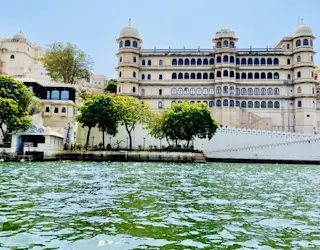
Manali to Udaipur taxi | ||
| Honda WRV Petrol MT Sunroof | ₹4500/day | Book Now |
| Alto 800 Petrol | ₹1800/day | Book Now |
| Tata Tiago MT Diesel | ₹1800/day | Book Now |
| Hyundai Aura MT Diesel | ₹2000/day | Book Now |
| Maruti Celerio AT Petrol | ₹2000/day | Book Now |
| Maruti Swift MT Petrol | ₹12/Km | Book Now |
| Hyundai Creata MT Diesel | ₹4000/day | Book Now |
| Hyundai I10 grand MT Petrol | ₹2000/day | Book Now |
| Hyundai i20 MT Diesel: | ₹3200/day | Book Now |
| Mahindra XUV 300, Sunroof MT | ₹4200/day | Book Now |
| Hyundai I10 grant MT Petrol | ₹2200/day | Book Now |
| Maruti S-Cross | ₹3500/day | Book Now |
| Maruti Breeza MT/AT Diesel | ₹3800/day | Book Now |
| Honda Amaze MT Diesel | ₹3200/day | Book Now |
| Maruti Dzire MT Diesel | ₹3000/day | Book Now |
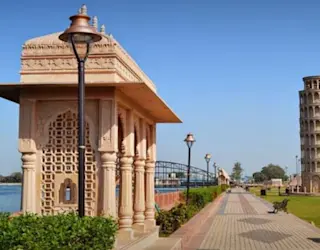
Manali to Kota taxi | ||
| Honda WRV Petrol MT Sunroof | ₹4500/day | Book Now |
| Alto 800 Petrol | ₹1800/day | Book Now |
| Tata Tiago MT Diesel | ₹1800/day | Book Now |
| Hyundai Aura MT Diesel | ₹2000/day | Book Now |
| Maruti Celerio AT Petrol | ₹2000/day | Book Now |
| Maruti Swift MT Petrol | ₹12/Km | Book Now |
| Hyundai Creata MT Diesel | ₹4000/day | Book Now |
| Hyundai I10 grand MT Petrol | ₹2000/day | Book Now |
| Hyundai i20 MT Diesel: | ₹3200/day | Book Now |
| Mahindra XUV 300, Sunroof MT | ₹4200/day | Book Now |
| Hyundai I10 grant MT Petrol | ₹2200/day | Book Now |
| Maruti S-Cross | ₹3500/day | Book Now |
| Maruti Breeza MT/AT Diesel | ₹3800/day | Book Now |
| Honda Amaze MT Diesel | ₹3200/day | Book Now |
| Maruti Dzire MT Diesel | ₹3000/day | Book Now |

Manali to Ambala taxi | ||
| Honda WRV Petrol MT Sunroof | ₹4500/day | Book Now |
| Alto 800 Petrol | ₹1800/day | Book Now |
| Tata Tiago MT Diesel | ₹1800/day | Book Now |
| Hyundai Aura MT Diesel | ₹2000/day | Book Now |
| Maruti Celerio AT Petrol | ₹2000/day | Book Now |
| Maruti Swift MT Petrol | ₹12/Km | Book Now |
| Hyundai Creata MT Diesel | ₹4000/day | Book Now |
| Hyundai I10 grand MT Petrol | ₹2000/day | Book Now |
| Hyundai i20 MT Diesel: | ₹3200/day | Book Now |
| Mahindra XUV 300, Sunroof MT | ₹4200/day | Book Now |
| Hyundai I10 grant MT Petrol | ₹2200/day | Book Now |
| Maruti S-Cross | ₹3500/day | Book Now |
| Maruti Breeza MT/AT Diesel | ₹3800/day | Book Now |
| Honda Amaze MT Diesel | ₹3200/day | Book Now |
| Maruti Dzire MT Diesel | ₹3000/day | Book Now |

Manali to Panchkula taxi | ||
| Honda WRV Petrol MT Sunroof | ₹4500/day | Book Now |
| Alto 800 Petrol | ₹1800/day | Book Now |
| Tata Tiago MT Diesel | ₹1800/day | Book Now |
| Hyundai Aura MT Diesel | ₹2000/day | Book Now |
| Maruti Celerio AT Petrol | ₹2000/day | Book Now |
| Maruti Swift MT Petrol | ₹12/Km | Book Now |
| Hyundai Creata MT Diesel | ₹4000/day | Book Now |
| Hyundai I10 grand MT Petrol | ₹2000/day | Book Now |
| Hyundai i20 MT Diesel: | ₹3200/day | Book Now |
| Mahindra XUV 300, Sunroof MT | ₹4200/day | Book Now |
| Hyundai I10 grant MT Petrol | ₹2200/day | Book Now |
| Maruti S-Cross | ₹3500/day | Book Now |
| Maruti Breeza MT/AT Diesel | ₹3800/day | Book Now |
| Honda Amaze MT Diesel | ₹3200/day | Book Now |
| Maruti Dzire MT Diesel | ₹3000/day | Book Now |

Manali to Karnal taxi | ||
| Honda WRV Petrol MT Sunroof | ₹4500/day | Book Now |
| Alto 800 Petrol | ₹1800/day | Book Now |
| Tata Tiago MT Diesel | ₹1800/day | Book Now |
| Hyundai Aura MT Diesel | ₹2000/day | Book Now |
| Maruti Celerio AT Petrol | ₹2000/day | Book Now |
| Maruti Swift MT Petrol | ₹12/Km | Book Now |
| Hyundai Creata MT Diesel | ₹4000/day | Book Now |
| Hyundai I10 grand MT Petrol | ₹2000/day | Book Now |
| Hyundai i20 MT Diesel: | ₹3200/day | Book Now |
| Mahindra XUV 300, Sunroof MT | ₹4200/day | Book Now |
| Hyundai I10 grant MT Petrol | ₹2200/day | Book Now |
| Maruti S-Cross | ₹3500/day | Book Now |
| Maruti Breeza MT/AT Diesel | ₹3800/day | Book Now |
| Honda Amaze MT Diesel | ₹3200/day | Book Now |
| Maruti Dzire MT Diesel | ₹3000/day | Book Now |

Manali to Hisar taxi | ||
| Honda WRV Petrol MT Sunroof | ₹4500/day | Book Now |
| Alto 800 Petrol | ₹1800/day | Book Now |
| Tata Tiago MT Diesel | ₹1800/day | Book Now |
| Hyundai Aura MT Diesel | ₹2000/day | Book Now |
| Maruti Celerio AT Petrol | ₹2000/day | Book Now |
| Maruti Swift MT Petrol | ₹12/Km | Book Now |
| Hyundai Creata MT Diesel | ₹4000/day | Book Now |
| Hyundai I10 grand MT Petrol | ₹2000/day | Book Now |
| Hyundai i20 MT Diesel: | ₹3200/day | Book Now |
| Mahindra XUV 300, Sunroof MT | ₹4200/day | Book Now |
| Hyundai I10 grant MT Petrol | ₹2200/day | Book Now |
| Maruti S-Cross | ₹3500/day | Book Now |
| Maruti Breeza MT/AT Diesel | ₹3800/day | Book Now |
| Honda Amaze MT Diesel | ₹3200/day | Book Now |
| Maruti Dzire MT Diesel | ₹3000/day | Book Now |
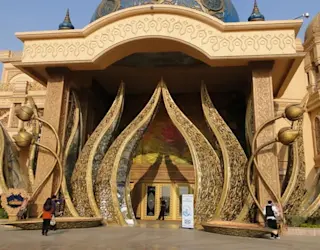
Manali to Gurugram taxi | ||
| Honda WRV Petrol MT Sunroof | ₹4500/day | Book Now |
| Alto 800 Petrol | ₹1800/day | Book Now |
| Tata Tiago MT Diesel | ₹1800/day | Book Now |
| Hyundai Aura MT Diesel | ₹2000/day | Book Now |
| Maruti Celerio AT Petrol | ₹2000/day | Book Now |
| Maruti Swift MT Petrol | ₹12/Km | Book Now |
| Hyundai Creata MT Diesel | ₹4000/day | Book Now |
| Hyundai I10 grand MT Petrol | ₹2000/day | Book Now |
| Hyundai i20 MT Diesel: | ₹3200/day | Book Now |
| Mahindra XUV 300, Sunroof MT | ₹4200/day | Book Now |
| Hyundai I10 grant MT Petrol | ₹2200/day | Book Now |
| Maruti S-Cross | ₹3500/day | Book Now |
| Maruti Breeza MT/AT Diesel | ₹3800/day | Book Now |
| Honda Amaze MT Diesel | ₹3200/day | Book Now |
| Maruti Dzire MT Diesel | ₹3000/day | Book Now |
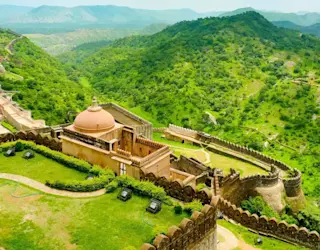
Manali to Panipat taxi | ||
| Honda WRV Petrol MT Sunroof | ₹4500/day | Book Now |
| Alto 800 Petrol | ₹1800/day | Book Now |
| Tata Tiago MT Diesel | ₹1800/day | Book Now |
| Hyundai Aura MT Diesel | ₹2000/day | Book Now |
| Maruti Celerio AT Petrol | ₹2000/day | Book Now |
| Maruti Swift MT Petrol | ₹12/Km | Book Now |
| Hyundai Creata MT Diesel | ₹4000/day | Book Now |
| Hyundai I10 grand MT Petrol | ₹2000/day | Book Now |
| Hyundai i20 MT Diesel: | ₹3200/day | Book Now |
| Mahindra XUV 300, Sunroof MT | ₹4200/day | Book Now |
| Hyundai I10 grant MT Petrol | ₹2200/day | Book Now |
| Maruti S-Cross | ₹3500/day | Book Now |
| Maruti Breeza MT/AT Diesel | ₹3800/day | Book Now |
| Honda Amaze MT Diesel | ₹3200/day | Book Now |
| Maruti Dzire MT Diesel | ₹3000/day | Book Now |

Manali to Sonipat taxi | ||
| Honda WRV Petrol MT Sunroof | ₹4500/day | Book Now |
| Alto 800 Petrol | ₹1800/day | Book Now |
| Tata Tiago MT Diesel | ₹1800/day | Book Now |
| Hyundai Aura MT Diesel | ₹2000/day | Book Now |
| Maruti Celerio AT Petrol | ₹2000/day | Book Now |
| Maruti Swift MT Petrol | ₹12/Km | Book Now |
| Hyundai Creata MT Diesel | ₹4000/day | Book Now |
| Hyundai I10 grand MT Petrol | ₹2000/day | Book Now |
| Hyundai i20 MT Diesel: | ₹3200/day | Book Now |
| Mahindra XUV 300, Sunroof MT | ₹4200/day | Book Now |
| Hyundai I10 grant MT Petrol | ₹2200/day | Book Now |
| Maruti S-Cross | ₹3500/day | Book Now |
| Maruti Breeza MT/AT Diesel | ₹3800/day | Book Now |
| Honda Amaze MT Diesel | ₹3200/day | Book Now |
| Maruti Dzire MT Diesel | ₹3000/day | Book Now |
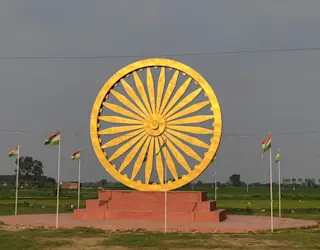
Manali to Yamuna Nagar taxi | ||
| Honda WRV Petrol MT Sunroof | ₹4500/day | Book Now |
| Alto 800 Petrol | ₹1800/day | Book Now |
| Tata Tiago MT Diesel | ₹1800/day | Book Now |
| Hyundai Aura MT Diesel | ₹2000/day | Book Now |
| Maruti Celerio AT Petrol | ₹2000/day | Book Now |
| Maruti Swift MT Petrol | ₹12/Km | Book Now |
| Hyundai Creata MT Diesel | ₹4000/day | Book Now |
| Hyundai I10 grand MT Petrol | ₹2000/day | Book Now |
| Hyundai i20 MT Diesel: | ₹3200/day | Book Now |
| Mahindra XUV 300, Sunroof MT | ₹4200/day | Book Now |
| Hyundai I10 grant MT Petrol | ₹2200/day | Book Now |
| Maruti S-Cross | ₹3500/day | Book Now |
| Maruti Breeza MT/AT Diesel | ₹3800/day | Book Now |
| Honda Amaze MT Diesel | ₹3200/day | Book Now |
| Maruti Dzire MT Diesel | ₹3000/day | Book Now |
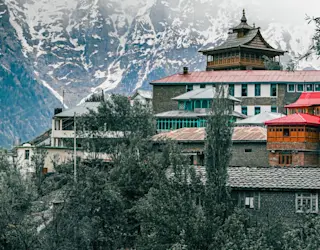
Manali to Doda taxi | ||
| Honda WRV Petrol MT Sunroof | ₹4500/day | Book Now |
| Alto 800 Petrol | ₹1800/day | Book Now |
| Tata Tiago MT Diesel | ₹1800/day | Book Now |
| Hyundai Aura MT Diesel | ₹2000/day | Book Now |
| Maruti Celerio AT Petrol | ₹2000/day | Book Now |
| Maruti Swift MT Petrol | ₹12/Km | Book Now |
| Hyundai Creata MT Diesel | ₹4000/day | Book Now |
| Hyundai I10 grand MT Petrol | ₹2000/day | Book Now |
| Hyundai i20 MT Diesel: | ₹3200/day | Book Now |
| Mahindra XUV 300, Sunroof MT | ₹4200/day | Book Now |
| Hyundai I10 grant MT Petrol | ₹2200/day | Book Now |
| Maruti S-Cross | ₹3500/day | Book Now |
| Maruti Breeza MT/AT Diesel | ₹3800/day | Book Now |
| Honda Amaze MT Diesel | ₹3200/day | Book Now |
| Maruti Dzire MT Diesel | ₹3000/day | Book Now |

Manali to Sonamarg taxi | ||
| Honda WRV Petrol MT Sunroof | ₹4500/day | Book Now |
| Alto 800 Petrol | ₹1800/day | Book Now |
| Tata Tiago MT Diesel | ₹1800/day | Book Now |
| Hyundai Aura MT Diesel | ₹2000/day | Book Now |
| Maruti Celerio AT Petrol | ₹2000/day | Book Now |
| Maruti Swift MT Petrol | ₹12/Km | Book Now |
| Hyundai Creata MT Diesel | ₹4000/day | Book Now |
| Hyundai I10 grand MT Petrol | ₹2000/day | Book Now |
| Hyundai i20 MT Diesel: | ₹3200/day | Book Now |
| Mahindra XUV 300, Sunroof MT | ₹4200/day | Book Now |
| Hyundai I10 grant MT Petrol | ₹2200/day | Book Now |
| Maruti S-Cross | ₹3500/day | Book Now |
| Maruti Breeza MT/AT Diesel | ₹3800/day | Book Now |
| Honda Amaze MT Diesel | ₹3200/day | Book Now |
| Maruti Dzire MT Diesel | ₹3000/day | Book Now |
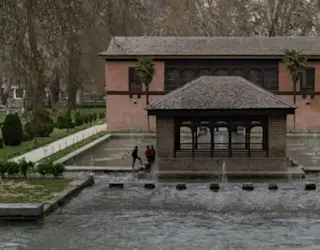
Manali to Verinag taxi | ||
| Honda WRV Petrol MT Sunroof | ₹4500/day | Book Now |
| Alto 800 Petrol | ₹1800/day | Book Now |
| Tata Tiago MT Diesel | ₹1800/day | Book Now |
| Hyundai Aura MT Diesel | ₹2000/day | Book Now |
| Maruti Celerio AT Petrol | ₹2000/day | Book Now |
| Maruti Swift MT Petrol | ₹12/Km | Book Now |
| Hyundai Creata MT Diesel | ₹4000/day | Book Now |
| Hyundai I10 grand MT Petrol | ₹2000/day | Book Now |
| Hyundai i20 MT Diesel: | ₹3200/day | Book Now |
| Mahindra XUV 300, Sunroof MT | ₹4200/day | Book Now |
| Hyundai I10 grant MT Petrol | ₹2200/day | Book Now |
| Maruti S-Cross | ₹3500/day | Book Now |
| Maruti Breeza MT/AT Diesel | ₹3800/day | Book Now |
| Honda Amaze MT Diesel | ₹3200/day | Book Now |
| Maruti Dzire MT Diesel | ₹3000/day | Book Now |

Manali to Yousmarg taxi | ||
| Honda WRV Petrol MT Sunroof | ₹4500/day | Book Now |
| Alto 800 Petrol | ₹1800/day | Book Now |
| Tata Tiago MT Diesel | ₹1800/day | Book Now |
| Hyundai Aura MT Diesel | ₹2000/day | Book Now |
| Maruti Celerio AT Petrol | ₹2000/day | Book Now |
| Maruti Swift MT Petrol | ₹12/Km | Book Now |
| Hyundai Creata MT Diesel | ₹4000/day | Book Now |
| Hyundai I10 grand MT Petrol | ₹2000/day | Book Now |
| Hyundai i20 MT Diesel: | ₹3200/day | Book Now |
| Mahindra XUV 300, Sunroof MT | ₹4200/day | Book Now |
| Hyundai I10 grant MT Petrol | ₹2200/day | Book Now |
| Maruti S-Cross | ₹3500/day | Book Now |
| Maruti Breeza MT/AT Diesel | ₹3800/day | Book Now |
| Honda Amaze MT Diesel | ₹3200/day | Book Now |
| Maruti Dzire MT Diesel | ₹3000/day | Book Now |

Manali to Bathinda taxi | ||
| Honda WRV Petrol MT Sunroof | ₹4500/day | Book Now |
| Alto 800 Petrol | ₹1800/day | Book Now |
| Tata Tiago MT Diesel | ₹1800/day | Book Now |
| Hyundai Aura MT Diesel | ₹2000/day | Book Now |
| Maruti Celerio AT Petrol | ₹2000/day | Book Now |
| Maruti Swift MT Petrol | ₹12/Km | Book Now |
| Hyundai Creata MT Diesel | ₹4000/day | Book Now |
| Hyundai I10 grand MT Petrol | ₹2000/day | Book Now |
| Hyundai i20 MT Diesel: | ₹3200/day | Book Now |
| Mahindra XUV 300, Sunroof MT | ₹4200/day | Book Now |
| Hyundai I10 grant MT Petrol | ₹2200/day | Book Now |
| Maruti S-Cross | ₹3500/day | Book Now |
| Maruti Breeza MT/AT Diesel | ₹3800/day | Book Now |
| Honda Amaze MT Diesel | ₹3200/day | Book Now |
| Maruti Dzire MT Diesel | ₹3000/day | Book Now |
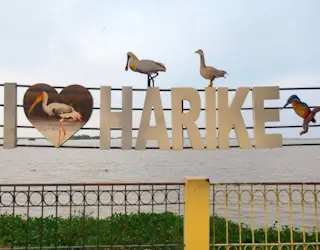
Manali to Harike Wetland taxi | ||
| Honda WRV Petrol MT Sunroof | ₹4500/day | Book Now |
| Alto 800 Petrol | ₹1800/day | Book Now |
| Tata Tiago MT Diesel | ₹1800/day | Book Now |
| Hyundai Aura MT Diesel | ₹2000/day | Book Now |
| Maruti Celerio AT Petrol | ₹2000/day | Book Now |
| Maruti Swift MT Petrol | ₹12/Km | Book Now |
| Hyundai Creata MT Diesel | ₹4000/day | Book Now |
| Hyundai I10 grand MT Petrol | ₹2000/day | Book Now |
| Hyundai i20 MT Diesel: | ₹3200/day | Book Now |
| Mahindra XUV 300, Sunroof MT | ₹4200/day | Book Now |
| Hyundai I10 grant MT Petrol | ₹2200/day | Book Now |
| Maruti S-Cross | ₹3500/day | Book Now |
| Maruti Breeza MT/AT Diesel | ₹3800/day | Book Now |
| Honda Amaze MT Diesel | ₹3200/day | Book Now |
| Maruti Dzire MT Diesel | ₹3000/day | Book Now |
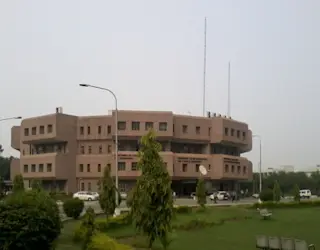
Manali to Jalandhar taxi | ||
| Honda WRV Petrol MT Sunroof | ₹4500/day | Book Now |
| Alto 800 Petrol | ₹1800/day | Book Now |
| Tata Tiago MT Diesel | ₹1800/day | Book Now |
| Hyundai Aura MT Diesel | ₹2000/day | Book Now |
| Maruti Celerio AT Petrol | ₹2000/day | Book Now |
| Maruti Swift MT Petrol | ₹12/Km | Book Now |
| Hyundai Creata MT Diesel | ₹4000/day | Book Now |
| Hyundai I10 grand MT Petrol | ₹2000/day | Book Now |
| Hyundai i20 MT Diesel: | ₹3200/day | Book Now |
| Mahindra XUV 300, Sunroof MT | ₹4200/day | Book Now |
| Hyundai I10 grant MT Petrol | ₹2200/day | Book Now |
| Maruti S-Cross | ₹3500/day | Book Now |
| Maruti Breeza MT/AT Diesel | ₹3800/day | Book Now |
| Honda Amaze MT Diesel | ₹3200/day | Book Now |
| Maruti Dzire MT Diesel | ₹3000/day | Book Now |
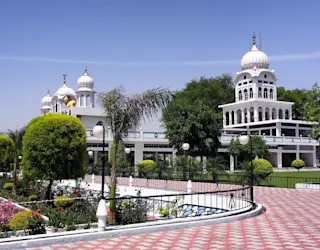
Manali to Ludhiana taxi | ||
| Honda WRV Petrol MT Sunroof | ₹4500/day | Book Now |
| Alto 800 Petrol | ₹1800/day | Book Now |
| Tata Tiago MT Diesel | ₹1800/day | Book Now |
| Hyundai Aura MT Diesel | ₹2000/day | Book Now |
| Maruti Celerio AT Petrol | ₹2000/day | Book Now |
| Maruti Swift MT Petrol | ₹12/Km | Book Now |
| Hyundai Creata MT Diesel | ₹4000/day | Book Now |
| Hyundai I10 grand MT Petrol | ₹2000/day | Book Now |
| Hyundai i20 MT Diesel: | ₹3200/day | Book Now |
| Mahindra XUV 300, Sunroof MT | ₹4200/day | Book Now |
| Hyundai I10 grant MT Petrol | ₹2200/day | Book Now |
| Maruti S-Cross | ₹3500/day | Book Now |
| Maruti Breeza MT/AT Diesel | ₹3800/day | Book Now |
| Honda Amaze MT Diesel | ₹3200/day | Book Now |
| Maruti Dzire MT Diesel | ₹3000/day | Book Now |

Manali to Pathankot taxi | ||
| Honda WRV Petrol MT Sunroof | ₹4500/day | Book Now |
| Alto 800 Petrol | ₹1800/day | Book Now |
| Tata Tiago MT Diesel | ₹1800/day | Book Now |
| Hyundai Aura MT Diesel | ₹2000/day | Book Now |
| Maruti Celerio AT Petrol | ₹2000/day | Book Now |
| Maruti Swift MT Petrol | ₹12/Km | Book Now |
| Hyundai Creata MT Diesel | ₹4000/day | Book Now |
| Hyundai I10 grand MT Petrol | ₹2000/day | Book Now |
| Hyundai i20 MT Diesel: | ₹3200/day | Book Now |
| Mahindra XUV 300, Sunroof MT | ₹4200/day | Book Now |
| Hyundai I10 grant MT Petrol | ₹2200/day | Book Now |
| Maruti S-Cross | ₹3500/day | Book Now |
| Maruti Breeza MT/AT Diesel | ₹3800/day | Book Now |
| Honda Amaze MT Diesel | ₹3200/day | Book Now |
| Maruti Dzire MT Diesel | ₹3000/day | Book Now |

Manali to Patiala taxi | ||
| Honda WRV Petrol MT Sunroof | ₹4500/day | Book Now |
| Alto 800 Petrol | ₹1800/day | Book Now |
| Tata Tiago MT Diesel | ₹1800/day | Book Now |
| Hyundai Aura MT Diesel | ₹2000/day | Book Now |
| Maruti Celerio AT Petrol | ₹2000/day | Book Now |
| Maruti Swift MT Petrol | ₹12/Km | Book Now |
| Hyundai Creata MT Diesel | ₹4000/day | Book Now |
| Hyundai I10 grand MT Petrol | ₹2000/day | Book Now |
| Hyundai i20 MT Diesel: | ₹3200/day | Book Now |
| Mahindra XUV 300, Sunroof MT | ₹4200/day | Book Now |
| Hyundai I10 grant MT Petrol | ₹2200/day | Book Now |
| Maruti S-Cross | ₹3500/day | Book Now |
| Maruti Breeza MT/AT Diesel | ₹3800/day | Book Now |
| Honda Amaze MT Diesel | ₹3200/day | Book Now |
| Maruti Dzire MT Diesel | ₹3000/day | Book Now |

Manali to Kanpur taxi | ||
| Honda WRV Petrol MT Sunroof | ₹4500/day | Book Now |
| Alto 800 Petrol | ₹1800/day | Book Now |
| Tata Tiago MT Diesel | ₹1800/day | Book Now |
| Hyundai Aura MT Diesel | ₹2000/day | Book Now |
| Maruti Celerio AT Petrol | ₹2000/day | Book Now |
| Maruti Swift MT Petrol | ₹12/Km | Book Now |
| Hyundai Creata MT Diesel | ₹4000/day | Book Now |
| Hyundai I10 grand MT Petrol | ₹2000/day | Book Now |
| Hyundai i20 MT Diesel: | ₹3200/day | Book Now |
| Mahindra XUV 300, Sunroof MT | ₹4200/day | Book Now |
| Hyundai I10 grant MT Petrol | ₹2200/day | Book Now |
| Maruti S-Cross | ₹3500/day | Book Now |
| Maruti Breeza MT/AT Diesel | ₹3800/day | Book Now |
| Honda Amaze MT Diesel | ₹3200/day | Book Now |
| Maruti Dzire MT Diesel | ₹3000/day | Book Now |
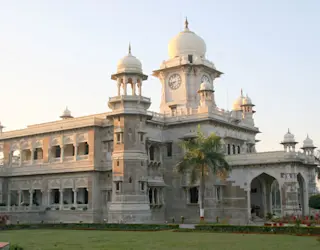
Manali to Jhansi taxi | ||
| Honda WRV Petrol MT Sunroof | ₹4500/day | Book Now |
| Alto 800 Petrol | ₹1800/day | Book Now |
| Tata Tiago MT Diesel | ₹1800/day | Book Now |
| Hyundai Aura MT Diesel | ₹2000/day | Book Now |
| Maruti Celerio AT Petrol | ₹2000/day | Book Now |
| Maruti Swift MT Petrol | ₹12/Km | Book Now |
| Hyundai Creata MT Diesel | ₹4000/day | Book Now |
| Hyundai I10 grand MT Petrol | ₹2000/day | Book Now |
| Hyundai i20 MT Diesel: | ₹3200/day | Book Now |
| Mahindra XUV 300, Sunroof MT | ₹4200/day | Book Now |
| Hyundai I10 grant MT Petrol | ₹2200/day | Book Now |
| Maruti S-Cross | ₹3500/day | Book Now |
| Maruti Breeza MT/AT Diesel | ₹3800/day | Book Now |
| Honda Amaze MT Diesel | ₹3200/day | Book Now |
| Maruti Dzire MT Diesel | ₹3000/day | Book Now |

Manali to Almora taxi | ||
| Honda WRV Petrol MT Sunroof | ₹4500/day | Book Now |
| Alto 800 Petrol | ₹1800/day | Book Now |
| Tata Tiago MT Diesel | ₹1800/day | Book Now |
| Hyundai Aura MT Diesel | ₹2000/day | Book Now |
| Maruti Celerio AT Petrol | ₹2000/day | Book Now |
| Maruti Swift MT Petrol | ₹12/Km | Book Now |
| Hyundai Creata MT Diesel | ₹4000/day | Book Now |
| Hyundai I10 grand MT Petrol | ₹2000/day | Book Now |
| Hyundai i20 MT Diesel: | ₹3200/day | Book Now |
| Mahindra XUV 300, Sunroof MT | ₹4200/day | Book Now |
| Hyundai I10 grant MT Petrol | ₹2200/day | Book Now |
| Maruti S-Cross | ₹3500/day | Book Now |
| Maruti Breeza MT/AT Diesel | ₹3800/day | Book Now |
| Honda Amaze MT Diesel | ₹3200/day | Book Now |
| Maruti Dzire MT Diesel | ₹3000/day | Book Now |
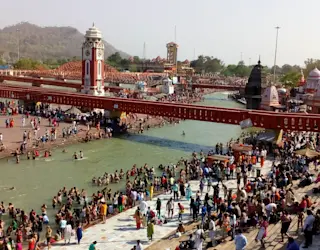
Manali to Haridwar taxi | ||
| Honda WRV Petrol MT Sunroof | ₹4500/day | Book Now |
| Alto 800 Petrol | ₹1800/day | Book Now |
| Tata Tiago MT Diesel | ₹1800/day | Book Now |
| Hyundai Aura MT Diesel | ₹2000/day | Book Now |
| Maruti Celerio AT Petrol | ₹2000/day | Book Now |
| Maruti Swift MT Petrol | ₹12/Km | Book Now |
| Hyundai Creata MT Diesel | ₹4000/day | Book Now |
| Hyundai I10 grand MT Petrol | ₹2000/day | Book Now |
| Hyundai i20 MT Diesel: | ₹3200/day | Book Now |
| Mahindra XUV 300, Sunroof MT | ₹4200/day | Book Now |
| Hyundai I10 grant MT Petrol | ₹2200/day | Book Now |
| Maruti S-Cross | ₹3500/day | Book Now |
| Maruti Breeza MT/AT Diesel | ₹3800/day | Book Now |
| Honda Amaze MT Diesel | ₹3200/day | Book Now |
| Maruti Dzire MT Diesel | ₹3000/day | Book Now |
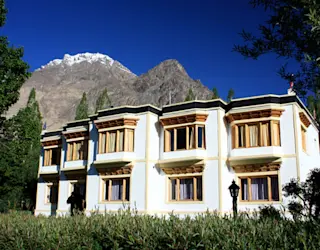
Manali to Hunder taxi | ||
| Honda WRV Petrol MT Sunroof | ₹4500/day | Book Now |
| Alto 800 Petrol | ₹1800/day | Book Now |
| Tata Tiago MT Diesel | ₹1800/day | Book Now |
| Hyundai Aura MT Diesel | ₹2000/day | Book Now |
| Maruti Celerio AT Petrol | ₹2000/day | Book Now |
| Maruti Swift MT Petrol | ₹12/Km | Book Now |
| Hyundai Creata MT Diesel | ₹4000/day | Book Now |
| Hyundai I10 grand MT Petrol | ₹2000/day | Book Now |
| Hyundai i20 MT Diesel: | ₹3200/day | Book Now |
| Mahindra XUV 300, Sunroof MT | ₹4200/day | Book Now |
| Hyundai I10 grant MT Petrol | ₹2200/day | Book Now |
| Maruti S-Cross | ₹3500/day | Book Now |
| Maruti Breeza MT/AT Diesel | ₹3800/day | Book Now |
| Honda Amaze MT Diesel | ₹3200/day | Book Now |
| Maruti Dzire MT Diesel | ₹3000/day | Book Now |
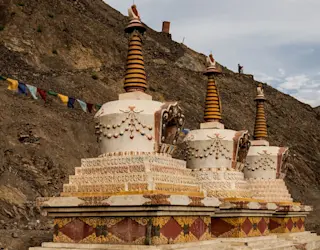
Manali to Lamayuru taxi | ||
| Honda WRV Petrol MT Sunroof | ₹4500/day | Book Now |
| Alto 800 Petrol | ₹1800/day | Book Now |
| Tata Tiago MT Diesel | ₹1800/day | Book Now |
| Hyundai Aura MT Diesel | ₹2000/day | Book Now |
| Maruti Celerio AT Petrol | ₹2000/day | Book Now |
| Maruti Swift MT Petrol | ₹12/Km | Book Now |
| Hyundai Creata MT Diesel | ₹4000/day | Book Now |
| Hyundai I10 grand MT Petrol | ₹2000/day | Book Now |
| Hyundai i20 MT Diesel: | ₹3200/day | Book Now |
| Mahindra XUV 300, Sunroof MT | ₹4200/day | Book Now |
| Hyundai I10 grant MT Petrol | ₹2200/day | Book Now |
| Maruti S-Cross | ₹3500/day | Book Now |
| Maruti Breeza MT/AT Diesel | ₹3800/day | Book Now |
| Honda Amaze MT Diesel | ₹3200/day | Book Now |
| Maruti Dzire MT Diesel | ₹3000/day | Book Now |
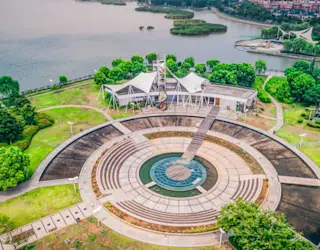
Manali to Chandigarh taxi | ||
| Honda WRV Petrol MT Sunroof | ₹4500/day | Book Now |
| Alto 800 Petrol | ₹1800/day | Book Now |
| Tata Tiago MT Diesel | ₹1800/day | Book Now |
| Hyundai Aura MT Diesel | ₹2000/day | Book Now |
| Maruti Celerio AT Petrol | ₹2000/day | Book Now |
| Maruti Swift MT Petrol | ₹12/Km | Book Now |
| Hyundai Creata MT Diesel | ₹4000/day | Book Now |
| Hyundai I10 grand MT Petrol | ₹2000/day | Book Now |
| Hyundai i20 MT Diesel: | ₹3200/day | Book Now |
| Mahindra XUV 300, Sunroof MT | ₹4200/day | Book Now |
| Hyundai I10 grant MT Petrol | ₹2200/day | Book Now |
| Maruti S-Cross | ₹3500/day | Book Now |
| Maruti Breeza MT/AT Diesel | ₹3800/day | Book Now |
| Honda Amaze MT Diesel | ₹3200/day | Book Now |
| Maruti Dzire MT Diesel | ₹3000/day | Book Now |
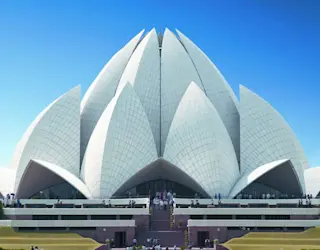
Manali to Delhi taxi | ||
| Honda WRV Petrol MT Sunroof | ₹4500/day | Book Now |
| Alto 800 Petrol | ₹1800/day | Book Now |
| Tata Tiago MT Diesel | ₹1800/day | Book Now |
| Hyundai Aura MT Diesel | ₹2000/day | Book Now |
| Maruti Celerio AT Petrol | ₹2000/day | Book Now |
| Maruti Swift MT Petrol | ₹12/Km | Book Now |
| Hyundai Creata MT Diesel | ₹4000/day | Book Now |
| Hyundai I10 grand MT Petrol | ₹2000/day | Book Now |
| Hyundai i20 MT Diesel: | ₹3200/day | Book Now |
| Mahindra XUV 300, Sunroof MT | ₹4200/day | Book Now |
| Hyundai I10 grant MT Petrol | ₹2200/day | Book Now |
| Maruti S-Cross | ₹3500/day | Book Now |
| Maruti Breeza MT/AT Diesel | ₹3800/day | Book Now |
| Honda Amaze MT Diesel | ₹3200/day | Book Now |
| Maruti Dzire MT Diesel | ₹3000/day | Book Now |
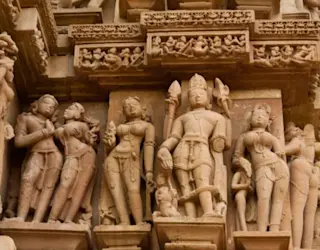
Manali to Khajuraho taxi | ||
| Honda WRV Petrol MT Sunroof | ₹4500/day | Book Now |
| Alto 800 Petrol | ₹1800/day | Book Now |
| Tata Tiago MT Diesel | ₹1800/day | Book Now |
| Hyundai Aura MT Diesel | ₹2000/day | Book Now |
| Maruti Celerio AT Petrol | ₹2000/day | Book Now |
| Maruti Swift MT Petrol | ₹12/Km | Book Now |
| Hyundai Creata MT Diesel | ₹4000/day | Book Now |
| Hyundai I10 grand MT Petrol | ₹2000/day | Book Now |
| Hyundai i20 MT Diesel: | ₹3200/day | Book Now |
| Mahindra XUV 300, Sunroof MT | ₹4200/day | Book Now |
| Hyundai I10 grant MT Petrol | ₹2200/day | Book Now |
| Maruti S-Cross | ₹3500/day | Book Now |
| Maruti Breeza MT/AT Diesel | ₹3800/day | Book Now |
| Honda Amaze MT Diesel | ₹3200/day | Book Now |
| Maruti Dzire MT Diesel | ₹3000/day | Book Now |
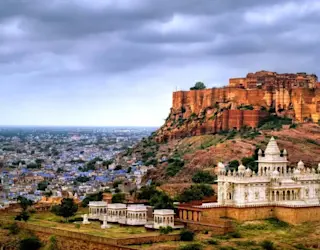
Manali to Jodhpur taxi | ||
| Honda WRV Petrol MT Sunroof | ₹4500/day | Book Now |
| Alto 800 Petrol | ₹1800/day | Book Now |
| Tata Tiago MT Diesel | ₹1800/day | Book Now |
| Hyundai Aura MT Diesel | ₹2000/day | Book Now |
| Maruti Celerio AT Petrol | ₹2000/day | Book Now |
| Maruti Swift MT Petrol | ₹12/Km | Book Now |
| Hyundai Creata MT Diesel | ₹4000/day | Book Now |
| Hyundai I10 grand MT Petrol | ₹2000/day | Book Now |
| Hyundai i20 MT Diesel: | ₹3200/day | Book Now |
| Mahindra XUV 300, Sunroof MT | ₹4200/day | Book Now |
| Hyundai I10 grant MT Petrol | ₹2200/day | Book Now |
| Maruti S-Cross | ₹3500/day | Book Now |
| Maruti Breeza MT/AT Diesel | ₹3800/day | Book Now |
| Honda Amaze MT Diesel | ₹3200/day | Book Now |
| Maruti Dzire MT Diesel | ₹3000/day | Book Now |
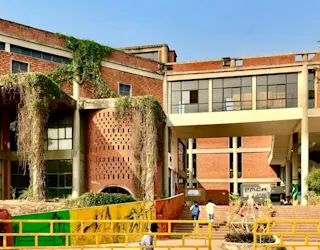
Manali to Mody School taxi | ||
| Honda WRV Petrol MT Sunroof | ₹4500/day | Book Now |
| Alto 800 Petrol | ₹1800/day | Book Now |
| Tata Tiago MT Diesel | ₹1800/day | Book Now |
| Hyundai Aura MT Diesel | ₹2000/day | Book Now |
| Maruti Celerio AT Petrol | ₹2000/day | Book Now |
| Maruti Swift MT Petrol | ₹12/Km | Book Now |
| Hyundai Creata MT Diesel | ₹4000/day | Book Now |
| Hyundai I10 grand MT Petrol | ₹2000/day | Book Now |
| Hyundai i20 MT Diesel: | ₹3200/day | Book Now |
| Mahindra XUV 300, Sunroof MT | ₹4200/day | Book Now |
| Hyundai I10 grant MT Petrol | ₹2200/day | Book Now |
| Maruti S-Cross | ₹3500/day | Book Now |
| Maruti Breeza MT/AT Diesel | ₹3800/day | Book Now |
| Honda Amaze MT Diesel | ₹3200/day | Book Now |
| Maruti Dzire MT Diesel | ₹3000/day | Book Now |
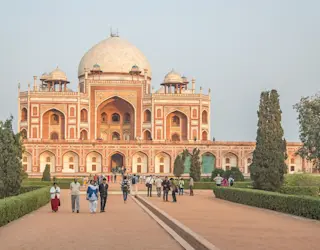
Manali to Qutub Minar taxi | ||
| Honda WRV Petrol MT Sunroof | ₹4500/day | Book Now |
| Alto 800 Petrol | ₹1800/day | Book Now |
| Tata Tiago MT Diesel | ₹1800/day | Book Now |
| Hyundai Aura MT Diesel | ₹2000/day | Book Now |
| Maruti Celerio AT Petrol | ₹2000/day | Book Now |
| Maruti Swift MT Petrol | ₹12/Km | Book Now |
| Hyundai Creata MT Diesel | ₹4000/day | Book Now |
| Hyundai I10 grand MT Petrol | ₹2000/day | Book Now |
| Hyundai i20 MT Diesel: | ₹3200/day | Book Now |
| Mahindra XUV 300, Sunroof MT | ₹4200/day | Book Now |
| Hyundai I10 grant MT Petrol | ₹2200/day | Book Now |
| Maruti S-Cross | ₹3500/day | Book Now |
| Maruti Breeza MT/AT Diesel | ₹3800/day | Book Now |
| Honda Amaze MT Diesel | ₹3200/day | Book Now |
| Maruti Dzire MT Diesel | ₹3000/day | Book Now |
Our outstation cars for Manali
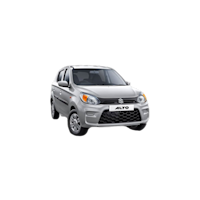
Alto 800 Petrol For Ajmer
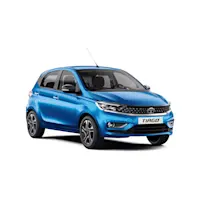
Tata Tiago MT Diesel For Ajmer
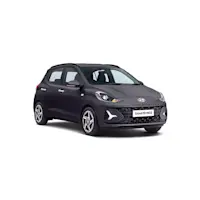
Hyundai I10 grant MT Petrol For Ajmer
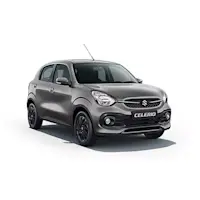
Maruti Celerio AT Petrol For Ajmer
Our intercity cars for Manali

Mahindra XUV 300, Sunroof MT For Ajmer
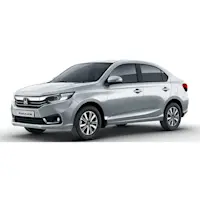
Hyundai Creata MT Diesel For Ajmer
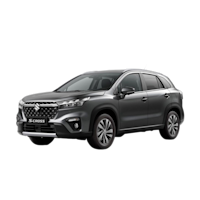
Maruti Breeza MT/AT Diesel For Ajmer
Luxury cars for Manali

Frequently Asked Questions
Discover Manali, a breathtaking Himalayan paradise nestled in Himachal Pradesh's Kullu Valley at 2,050 meters. This mountain haven offers a perfect blend of natural splendor, adventure opportunities, ancient temples, and vibrant culture, making it one of India's most beloved destinations for travelers seeking both tranquility and exhilaration.
Table of Contents
Overview of Manali
Best Time to Visit
How to Reach Manali
Places to Visit and Distances
Top 10 Most Visited Destinations
Things to Do in Manali
What to Eat in Manali
Must-Buy Souvenirs
Tips Before Visiting Manali
Frequently Asked Questions
Nestled in the breathtaking Kullu Valley at an altitude of 2,050 meters (6,726 feet), Manali stands as one of Himachal Pradesh's crown jewels and India's most beloved mountain destinations. This picturesque hill station offers a perfect blend of natural splendor, adventure opportunities, and cultural richness that attracts travelers from across the globe year-round.
Cradled between the majestic Pir Panjal and Dhauladhar ranges, Manali captivates visitors with its snow-capped peaks, lush pine forests, cascading waterfalls, and the serene Beas River flowing through its heart. The landscape transforms dramatically with seasons – from snow-covered wonderland in winter to vibrant greenery in summer and golden-hued valleys in autumn.
Beyond natural beauty, Manali boasts a rich cultural heritage visible in its ancient temples, traditional architecture, and local festivals. The town's history dates back to antiquity, with mythological significance as the land where Manu (the Hindu equivalent of Noah) recreated human life after the great flood. This legend gives Manali its name, derived from "Manu-Alaya" meaning "the abode of Manu."
Today, Manali offers a fascinating contrast between the tranquil Old Manali with its traditional charm and the bustling New Manali with modern amenities. The town serves as both a peaceful retreat for those seeking solitude and a base camp for adventure enthusiasts eager to explore the Himalayan wilderness.
For adventure seekers, Manali is nothing short of paradise, offering activities ranging from trekking and mountaineering to paragliding, river rafting, and skiing. The renowned Rohtang Pass and Solang Valley have become synonymous with snow adventures and breathtaking panoramic views that leave visitors spellbound.
Spirituality thrives in Manali's sacred spaces, most notably the ancient Hadimba Temple, a unique wooden pagoda nestled within a cedar forest that dates back to 1553. The Vashisht Temple with its hot springs offers a glimpse into traditional religious practices combined with natural healing.
The culinary landscape reflects the diverse cultural influences, featuring traditional Himachali dishes alongside Tibetan, North Indian, and international cuisines. The agricultural bounty of the valley provides fresh ingredients, particularly apples and other temperate fruits that find their way into local specialties.
Whether you're drawn to adventure sports, spiritual exploration, honeymoon romance, family vacation, or simply a retreat into nature's embrace, Manali promises unforgettable experiences that keep visitors returning through the changing seasons.
Best Time to Visit
Manali experiences distinct seasonal changes, each offering unique experiences and attractions. Understanding these seasonal variations helps visitors plan the perfect trip aligned with their preferences and interests.
Summer (March to June)
Temperature Range
: 10°C to 25°C (50°F to 77°F)
Highlights
: Comfortable weather, lush greenery, ideal for outdoor activities
Perfect For
: Family vacations, adventure activities, exploring local attractions
Festivals
: Hadimba Devi Festival (May)
Considerations
: Peak tourist season with higher accommodation rates and crowds, especially during school holidays
Recommended For
: First-time visitors who want to experience Manali's highlights without extreme weather conditions
Monsoon (July to September)
Temperature Range
: 10°C to 20°C (50°F to 68°F)
Highlights
: Lush landscapes, flowing waterfalls, reduced tourist crowds
Perfect For
: Budget travelers, photography enthusiasts, peaceful retreats
Considerations
: Occasional landslides, slippery roads, some adventure activities restricted
Festivals
: Independence Day celebrations (August 15)
Recommended For
: Travelers seeking tranquility and bargain accommodations who don't mind occasional rainfall
Autumn (October to November)
Temperature Range
: 5°C to 15°C (41°F to 59°F)
Highlights
: Clear skies, stunning fall colors, excellent visibility of mountain ranges
Perfect For
: Photography, trekking, peaceful exploration
Considerations
: Cooler evenings requiring warm clothing
Festivals
: Dussehra and Diwali celebrations
Recommended For
: Travelers seeking ideal balance between good weather and fewer crowds
Winter (December to February)
Temperature Range
: -1°C to 10°C (30°F to 50°F), can drop below freezing
Highlights
: Snowfall, winter sports, magical snow-covered landscapes
Perfect For
: Snow enthusiasts, romantic getaways, winter sports
Festivals
: Winter Carnival (January), Christmas and New Year celebrations
Considerations
: Limited accessibility to higher attractions like Rohtang Pass, some roads may be closed
Recommended For
: Snow lovers, honeymoon couples, adventure seekers interested in skiing and snowboarding
Ideal Timing by Traveler Type
Adventure Seekers
: April-June for most activities, December-February for snow adventures
Family Vacations
: April-June, September-October for comfortable weather and accessibility
Budget Travelers
: September-November, February-March (shoulder seasons)
Honeymoon Couples
: April-June for pleasant weather, December-February for snowy romance
Photography Enthusiasts
: October-November for fall colors, January-February for snow landscapes
Spiritual Seekers
: Any time except peak monsoon, with fewer crowds during shoulder seasons
Climate experts recommend checking recent weather forecasts before traveling, as mountain weather can be unpredictable and has been showing increasing variability due to climate change in recent years.
How to Reach Manali
Manali's stunning Himalayan location is accessible through various transportation options, each offering different conveniences and experiences.
By Air
Nearest Airport
: Bhuntar Airport (Kullu-Manali Airport) – KUU
Distance from Manali
: 50 km (approximately 1.5-2 hours drive)
Connected Cities
: Delhi (seasonal direct flights)
Airlines Operating
: Air India, SpiceJet (limited schedules)
Alternative
: Chandigarh Airport (310 km, 7-8 hours drive) offers more frequent connections
Airport Transfer
: Taxis available at airport (₹1,500-2,000), pre-book for better rates
Considerations
: Flight schedules are weather-dependent and may face cancellations during adverse conditions
By Road
From Delhi to Manali
Distance
: 550 km
Duration
: 12-14 hours
Route
: Delhi → Chandigarh → Bilaspur → Sundernagar → Mandi → Kullu → Manali
Road Condition
: Well-maintained highways, mountain roads in the final stretch
Transport Options:
Private Vehicle
: Recommended for flexibility, requires experienced driver for mountain roads
Taxi Services
: One-way fare from Delhi ranges from ₹6,000-12,000 depending on vehicle type
Bus Services
: Volvo/AC buses (₹1,200-1,800), Regular buses (₹700-1,000)
Bus Frequency
: Multiple departures from ISBT Kashmere Gate (Delhi), daytime and overnight options
Recommended Stops
: Chandigarh, Bilaspur, Sundernagar, Mandi
From Chandigarh to Manali
Distance
: 310 km
Duration
: 7-8 hours
Transport Options
: Buses, taxis, private vehicles
Bus Fare
: ₹300-800 depending on type
Road Highlights
: Scenic drive through lower Himalayas with several interesting stops
From Shimla to Manali
Distance
: 250 km
Duration
: 6-7 hours
Route
: Shimla → Mandi → Kullu → Manali
Transport Options
: Buses, taxis, private vehicles
Road Condition
: Winding mountain roads with scenic views
Considerations
: An alternative route for those visiting Shimla first
By Rail
Nearest Railway Station
: Joginder Nagar Railway Station (narrow gauge)
Distance from Manali
: 166 km
Alternative Major Stations:
Una (250 km from Manali)
Chandigarh (310 km from Manali)
Ambala (350 km from Manali)
Onward Journey
: Buses and taxis available from these stations to Manali
Toy Train Experience
: The Kalka-Shimla toy train offers a scenic journey, followed by a road trip to Manali
Note
: No direct rail connectivity to Manali; train journey must be combined with road travel
Local Transportation in Manali
Local Buses
: Connect major attractions, economical but infrequent
Auto-Rickshaws
: Available in main town areas
Taxis: Readily available, can be hired for sightseeing
Half-day local sightseeing: ₹1,200-1,500
Full-day local sightseeing: ₹2,000-2,500
Rental Services:
Motorcycles/Scooters: ₹800-1,500 per day
Bicycles: ₹200-400 per day
Walking
: Old Manali and main market areas are best explored on foot
Travel Tips
Book transportation in advance during peak seasons (May-June, December-January)
Allow buffer time for journeys, especially during monsoon or winter
Confirm road conditions before traveling between December and March
Motion sickness remedies recommended for winding mountain roads
For budget travelers, HRTC (Himachal Road Transport Corporation) buses offer the most economical option
Download offline maps as mobile connectivity can be intermittent on mountain routes
If self-driving, ensure vehicle is in good condition with properly functioning brakes
For overnight bus journeys, semi-sleeper or sleeper Volvo buses offer more comfort
Places to Visit and Distances
Manali serves as an excellent base to explore numerous attractions, both within the town and in the surrounding region. Below is a comprehensive list of key destinations with distances from Manali's main bus stand.
Within Manali Town (0-5 km)
Destination | Distance | Travel Time | Transport Options |
Hadimba Devi Temple | 2 km | 10 minutes | Walk, auto, taxi |
Manu Temple | 3 km | 15 minutes | Walk, auto, taxi |
Vashisht Hot Springs | 3 km | 15 minutes | Auto, taxi |
The Mall Road | 0.5 km | 5 minutes | Walk |
Old Manali | 2.5 km | 15 minutes | Walk, auto, taxi |
Van Vihar | 1 km | 5 minutes | Walk |
Club House | 1.5 km | 10 minutes | Walk, auto |
Tibetan Monasteries | 2-3 km | 10-15 minutes | Walk, auto, taxi |
Near Manali (5-25 km)
Destination | Distance | Travel Time | Transport Options |
Solang Valley | 14 km | 30-40 minutes | Taxi, bus |
Naggar Castle | 22 km | 45-50 minutes | Taxi, bus |
Jogini Waterfall | 7 km | 25 minutes + 1-hour trek | Taxi + hiking |
Rahala Waterfalls | 16 km | 35-40 minutes | Taxi |
Arjun Gufa (Cave) | 5 km | 20 minutes | Taxi, auto |
Nehru Kund | 6 km | 15-20 minutes | Taxi, auto |
Anjani Mahadev | 9 km | 25-30 minutes | Taxi |
Gulaba | 20 km | 40-45 minutes | Taxi, bus |
Day Trips from Manali (25+ km)
Destination | Distance | Travel Time | Transport Options |
Rohtang Pass | 51 km | 2-3 hours | Taxi |
Manikaran | 85 km | 3 hours | Taxi, bus |
Kasol | 80 km | 2.5-3 hours | Taxi, bus |
Kullu | 40 km | 1-1.5 hours | Taxi, bus |
Naggar | 22 km | 45-50 minutes | Taxi, bus |
Malana | 90 km | 4 hours | Taxi + trek |
Atal Tunnel | 40 km | 1.5 hours | Taxi |
Sissu (via Atal Tunnel) | 60 km | 2 hours | Taxi |
Hampta Pass Trek | 40 km to starting point | 1.5 hours drive + trek | Taxi + trek |
Bhrigu Lake | 16 km drive + trek | 1 hour drive + 5-6 hour trek | Taxi + trek |
Important Notes about Distances
Travel times can vary significantly based on traffic, weather conditions, and road maintenance
During peak tourist season, journey times may increase by 30-50%
Rohtang Pass requires permits (limited daily) and is typically closed from November to May
For locations requiring trekking, appropriate footwear and physical preparation are necessary
Local taxis typically charge a full/half-day rate rather than by distance
Shared taxis are available for popular destinations like Solang Valley during peak season
Some remote locations have limited public transportation options
Always check road conditions during monsoon season and winter months
Top 10 Most Visited Destinations
1. Rohtang Pass
Distance from Manali: 51 km Altitude: 3,978 meters (13,050 feet) Highlights: Panoramic Himalayan views, snow activities year-round, gateway to Lahaul and Spiti Valley Best Time to Visit: May-June and October-November Important Notes:
Requires permits with limited daily quotas (apply online or through travel agents)
Closed during winter (November-May), Atal Tunnel offers alternative access to areas beyond
Early morning departures recommended to avoid traffic and clouds
Snow activities available: skiing, snow scooters, sledding
Eco-fee and entry charges applicable
Altitude sickness possible; acclimatize properly before visiting
Heavy tourist traffic during peak season; expect delays
Weather can change rapidly; carry warm clothing regardless of season
2. Solang Valley
Distance from Manali: 14 km Altitude: 2,560 meters (8,400 feet) Highlights: Adventure sports hub, paragliding, zorbing, skiing (winter), cable car ride, panoramic views Best Time to Visit: Year-round; winter for snow sports, summer for paragliding Important Notes:
Gondola/cable car operates from 9 AM to 6 PM (₹500-700 per person)
Adventure activities priced separately: paragliding (₹1,000-3,500), zorbing (₹500-1,000)
Winter season offers skiing with equipment rentals and instructors available
Can get crowded during peak season; early morning visits recommended
Suitable for families, adventure enthusiasts, photographers
Several restaurants and snack stalls available
Beautiful wildflower meadows during spring and summer
Stunning views of Beas Kund glacier and surrounding peaks
3. Hadimba Devi Temple
Distance from Manali: 2 km Highlights: Ancient wooden temple dedicated to Goddess Hadimba, unique architecture, spiritual significance, cedar forest setting Best Time to Visit: Year-round; especially during Hadimba Devi Festival in May Important Notes:
Built in 1553 CE with distinctive pagoda-style architecture
Religious ceremonies occur throughout the day
Traditional Kullu caps and costume photography available nearby
Surrounding cedar forest offers peaceful walking paths
Local market with souvenirs and food stalls in vicinity
Temple dedicated to wife of Bhima from Mahabharata
Impressive 24-meter tall cedar trees surround the temple
Wooden architecture features intricate carvings
Small shrine to Ghatotkacha (son of Hadimba) nearby
4. Old Manali
Distance from Manali: 2.5 km Highlights: Bohemian atmosphere, cafés, international cuisine, ancient Manu Temple, riverside locations, traditional wooden houses Best Time to Visit: Year-round; especially vibrant during summer Important Notes:
Connected to New Manali by a bridge over the Manalsu River
Popular among backpackers and international travelers
Numerous cafés offering diverse cuisine (Italian, Israeli, Tibetan)
Traditional Kullu architecture visible in older structures
Manu Temple dedicated to Sage Manu located here
Vibrant nightlife with live music in several establishments
Apple orchards and guesthouses with mountain views
Riverside cafés along the Beas River
Art galleries and handicraft shops featuring local artisans
More laid-back atmosphere than commercial New Manali
5. Vashisht Hot Springs and Temple
Distance from Manali: 3 km Highlights: Natural hot springs with medicinal properties, ancient temple, traditional village, mountain views Best Time to Visit: Year-round; especially soothing during winter Important Notes:
Dedicated to Sage Vashisht, features ancient temple with hot spring baths
Separate bathing areas for men and women
Natural sulfur springs believed to cure skin ailments
Traditional Himachali village atmosphere with old wooden houses
Several German bakeries and cafés in the vicinity
Tranquil atmosphere compared to main Manali town
Temple contains ancient stone carvings and religious artifacts
Hot springs maintained by local authorities
Spectacular views of Beas River Valley
Modest dress recommended when visiting temple premises
6. Naggar Castle and Art Gallery
Distance from Manali: 22 km Highlights: 500-year-old medieval castle, Nicholas Roerich Art Gallery, heritage architecture, panoramic valley views Best Time to Visit: Year-round; especially beautiful during spring and autumn Important Notes:
Built in the 15th century using stone and wood in traditional Kullu style
Served as the former capital of Kullu for about 1,400 years
Now operates as a heritage hotel and museum
Nicholas Roerich Art Gallery showcases works of the famous Russian painter
Traditional Kullu architecture visible throughout the village
Several ancient temples in the vicinity
Spectacular views of Kullu Valley and snow-capped peaks
Castle combines elements of European and Himalayan architecture
Wood and stone construction without using cement or mortar
Regular cultural performances in the castle courtyard
7. Mall Road, Manali
Distance from Manali: Central location Highlights: Shopping hub, restaurants, souvenir shops, local handicrafts, vibrant atmosphere Best Time to Visit: Year-round; evening time most lively Important Notes:
Main commercial center of Manali
Variety of shops selling woolens, handicrafts, and souvenirs
Numerous restaurants serving diverse cuisines
Banks, ATMs, and currency exchange services available
Tibetan Market nearby offers additional shopping options
Best explored on foot; typically closed to vehicles in evening hours
Street food vendors offering local snacks
Several tour operators for booking adventure activities
Information centers for tourists
Bustling with activity, especially during peak tourist season
8. Jogini Waterfall
Distance from Manali: 7 km + 2 km trek Highlights: Multi-tiered waterfall, serene environment, trekking experience, surrounding pine forests Best Time to Visit: April-June and September-October Important Notes:
Requires a moderate 1-2 hour trek from Vashisht village
Sacred site for locals with a small temple at the base
Spectacular flow during and after monsoon season
Suitable footwear essential as paths can be slippery
Picnic spot with natural pools at different levels
Photography opportunity with stunning landscape views
Trek passes through apple orchards and pine forests
Local belief holds the waters have healing properties
Several small cafés at the starting point of trek
Carry water and snacks as no facilities available at waterfall
9. Gulaba
Distance from Manali: 20 km Altitude: 3,390 meters (11,122 feet) Highlights: Snow experiences closer than Rohtang, meadows, adventure activities, less crowded Best Time to Visit: Year-round; winter for snow activities Important Notes:
Popular alternative when Rohtang Pass is closed or permits are unavailable
Snow activities available during winter months
Beautiful wildflower meadows during spring and summer
Offers similar experiences to Rohtang with fewer crowds
No permit required unlike Rohtang Pass
Starting point for several treks including Bhrigu Lake trek
Panoramic views of Pir Panjal and Dhauladhar ranges
Adventure activities including paragliding and skiing
Several small eateries serving hot beverages and snacks
Good photography location for mountain landscapes
10. Atal Tunnel and Sissu
Distance from Manali: 40 km to tunnel entrance Highlights: World's longest highway tunnel at this altitude, engineering marvel, access to Lahaul Valley Best Time to Visit: Year-round Important Notes:
Opened in 2020, 9.02 km long tunnel beneath the Rohtang Pass
Reduces travel time to Lahaul and Spiti significantly
All-weather connectivity to regions previously cut off in winter
Sissu village with its waterfall is a popular stop after crossing the tunnel
Panoramic views of Lahaul Valley after emerging from the tunnel
Temperature drops significantly on the other side of the tunnel
Engineering marvel built with cutting-edge technology
Multiple viewpoints after tunnel exit for photography
No special permits required unlike Rohtang Pass
Significant military importance for border areas
Things to Do in Manali
Manali offers diverse activities catering to various interests, from adrenaline-pumping adventures to serene natural experiences and cultural immersion.
Adventure Activities
Paragliding
Location
: Solang Valley, Marhi
Cost
: ₹1,500-3,500 depending on duration (short/long flights)
Best Season
: April-June, September-October
Experience
: Tandem flights with experienced pilots offering bird's-eye views of the Kullu Valley
Requirements
: Basic health declaration, weight restrictions apply
Booking
: Available through hotels, travel agencies, or directly at sites
Duration
: Short flights (5-10 minutes), long flights (15-20 minutes)
Safety
: Choose licensed operators with proper safety equipment
Photography
: GoPro videos available for additional fee
River Rafting
Location
: Beas River (Pirdi to Jhiri stretch)
Cost
: ₹600-1,200 per person depending on stretch length
Best Season
: April-June, September-October
Rapids Grade
: Grade I to Grade III, suitable for beginners and intermediates
Duration
: 1-2 hours depending on selected stretch
Safety
: Includes life jackets, helmets, and professional guides
Additional
: Photography packages available separately
Group Size
: Typically 6-8 people per raft
Age Limit
: Usually minimum 12-14 years depending on water conditions
Skill Level
: No prior experience needed for beginner sections
Skiing and Snowboarding
Location
: Solang Valley, Gulaba (winter); Rohtang Pass (summer)
Cost
: Equipment rental ₹300-700; Instructors ₹500-1,000 per hour
Best Season
: December-February in Solang; limited summer skiing at Rohtang
Experience
: Ranges from beginner slopes to more advanced runs
Training
: Short courses available for beginners
Equipment
: Rentals available on-site including skis, boots, poles, and snowboards
Duration
: Typically 1-3 hour sessions
Terrain
: Gentle slopes for beginners, steeper sections for intermediate skiers
Facilities
: Basic amenities including equipment shops and refreshment areas
Alternative
: Snow tubing and sledding for non-skiers
Mountain Biking
Location
: Various trails around Manali, Old Manali to Naggar route
Cost
: Bike rentals ₹800-2,000 per day depending on bike quality
Best Season
: April-June, September-November
Popular Routes:
Manali to Naggar (moderate, 22 km)
Manali to Gulaba (challenging, 20 km)
Old Manali forest trails (various difficulties)
Equipment
: Helmets included with rentals, limited technical gear available
Terrain
: Mix of paved roads, dirt tracks, and forest trails
Skill Level
: Routes available for beginners to experienced riders
Guided Tours
: Available through adventure companies
Maintenance
: Basic repair facilities available in Manali town
Zorbing
Location
: Solang Valley
Cost
: ₹500-1,000 per person
Best Season
: April-June, September-October
Experience
: Rolling downhill in a transparent sphere
Requirements
: Height and weight restrictions apply
Duration
: Brief but exhilarating experience
Restrictions
: Not recommended for people with back problems or motion sickness
Group Experience
: Can be done individually or in pairs
Surface
: Grassy slopes specially prepared for zorbing
Safety
: Conducted under supervision with proper harnesses
Nature and Relaxation Activities
Hot Spring Baths
Location
: Vashisht Temple
Cost
: Free (public baths); Private baths available in some guesthouses
Best Season
: Year-round; particularly refreshing in winter
Experience
: Natural sulfur springs with healing properties
Facilities
: Separate sections for men and women
Cultural Aspect
: Combine with visit to ancient Vashisht Temple
Healing Properties
: Said to cure skin ailments and joint pain
Etiquette
: Modest bathing attire expected
Timing
: Usually open from early morning until evening
Local Belief
: Waters blessed by Sage Vashisht himself
Hiking and Nature Walks
Popular Trails:
Jogini Waterfall Trek (easy, 2-3 hours round trip)
Old Manali Forest Walk (easy, 1-2 hours)
Hamya Village Trek (moderate, 3-4 hours round trip)
Cost
: Free; guides available (₹500-1,000 per day)
Best Season
: April-June, September-November
Experience
: Pine forests, mountain streams, village life
Requirements
: Basic fitness, appropriate footwear
Wildlife Spotting
: Opportunities for birdwatching and occasional wildlife sightings
Photography
: Excellent natural landscapes and mountain views
Local Interaction
: Chance to meet villagers and see traditional lifestyle
Accessibility
: Many trails start directly from Manali town
Equipment
: Day pack with water, snacks, rain protection recommended
Meditation and Yoga
Locations
: Various ashrams, yoga centers, and hotels offer sessions
Cost
: ₹300-1,000 per session; multi-day packages available
Best Season
: Year-round; indoor facilities available in winter
Experience
: Classes ranging from beginner to advanced levels
Special Programs
: Several centers offer yoga retreats during summer
Settings
: Indoor studios and outdoor sessions with mountain backdrops
Styles
: Hatha, Ashtanga, and meditation-focused sessions
Duration
: Typically 60-90 minute classes
Benefits
: Physical wellness, stress reduction, spiritual connection
Drop-in Classes
: Available at most centers without advance booking
Camping
Locations:
Solang Valley
Banks of River Beas
Sethan Village (15 km from Manali)
Cost
: ₹1,000-3,000 per night including meals
Best Season
: April-June, September-October
Experience
: Riverside and forest camping with bonfires
Facilities
: Range from basic to luxury glamping options
Activities
: Often combined with bonfire, barbecue, and music
Packages
: Many include outdoor activities and meals
Group Size
: Family tents and group camping available
Views
: Star-gazing opportunities on clear nights
Safety
: Established campgrounds offer security and basic amenities
Cultural Experiences
Temple Tours
Key Temples:
Hadimba Devi Temple (ancient wooden temple)
Manu Temple (dedicated to Sage Manu)
Vashisht Temple (ancient stone temple with hot springs)
Siyali Mahadev Temple (dedicated to Lord Shiva)
Cost
: Free entry; optional donations
Best Season
: Year-round; special festivals enhance experience
Guided Tours
: Available through hotels or local guides (₹500-1,000)
Cultural Insights
: Opportunity to learn about local deities and traditions
Photography
: Generally permitted in outer areas; restrictions in inner sanctums
Dress Code
: Modest attire recommended (shoulders and knees covered)
Religious Ceremonies
: Morning and evening aartis open to visitors
Architectural Styles
: Mix of traditional Himalayan and Hindu temple designs
Local Beliefs
: Each temple has unique stories and spiritual significance
Tibetan Monasteries Visit
Locations:
Gadhan Thekchhokling Gompa (Manali town)
Himalayan Nyingmapa Gompa (Manali town)
Cost
: Free entry; donations appreciated
Best Season
: Year-round
Experience
: Buddhist architecture, prayer wheels, meditation halls
Special Events
: Check for Buddhist festivals and prayer ceremonies
Shopping
: Handicrafts and Tibetan artifacts often available nearby
Cultural Significance
: Represents Tibetan refugee community in Manali
Prayer Times
: Morning chanting sessions open to respectful visitors
Teachings
: Some monasteries offer dharma talks in English
Atmosphere
: Peaceful environments conducive to meditation and reflection
Local Village Exploration
Villages to Visit:
Old Manali
Vashisht
Goshal
Shanag
Naggar
Cost
: Free; guides available (₹500-1,000)
Best Season
: April-October
Experience
: Traditional Kullu architecture, local lifestyle, orchards
Interactions
: Opportunities to meet locals and learn about mountain life
Photography
: Excellent settings for cultural and architectural photography
Agricultural Activities
: Apple orchards, farming techniques
Traditional Houses
: Wooden structures with distinctive Himachali features
Local Crafts
: Weaving, woodwork, and other traditional skills
Food Experiences
: Home-cooked meals sometimes available in village homes
Culinary Workshops
Locations
: Various hotels and restaurants offer cooking classes
Cost
: ₹500-1,500 per session
Best Season
: Year-round
Experience
: Learn to prepare Himachali dishes and local specialties
Duration
: Typically 2-3 hours including meal
Takeaway
: Recipes and cooking techniques to recreate dishes at home
Specialties Taught
: Siddu preparation, traditional chutneys, Himachali thali
Group Size
: Usually small groups for hands-on experience
Ingredients
: Focus on local and seasonal produce
Cultural Context
: Stories and history behind traditional dishes
Seasonal Special Activities
Winter Activities (December-February)
Snowball fights and snow sculpture making
Snow tubing
Heli-skiing for advanced skiers
Winter festivals and Christmas/New Year celebrations
Bonfire evenings with local music
Hot springs visits (especially appealing in cold weather)
Snow photography opportunities
Cozy café experiences with mountain views
Hot beverage specialties (local teas and brews)
Winter hiking with proper equipment
Spring Activities (March-April)
Apple blossom tours
Bird watching as migratory birds return
Photography tours capturing mountain flowers
Traditional spring festival participation
Early season trekking with fewer crowds
River fishing (with proper permits)
Paragliding in clear spring skies
Cycling through blooming valleys
Wildlife watching as animals become active
Picnics in flowering meadows
Monsoon Activities (July-September)
Waterfall tours when falls are at their most powerful
Indoor activities: cooking classes, yoga retreats
Cultural museum visits
Local handicraft workshops
Photography of misty mountains and clouds
Riverside café visits during rain breaks
Reading retreats in cozy guesthouses
Green Valley visits for lush landscape views
Local festival participation
Discounted accommodation and activities
Autumn Activities (October-November)
Fall foliage photography
Harvest festival experiences
Trekking in optimal weather conditions
Star gazing on clear autumn nights
Apple picking and orchard tours
Pre-winter shopping for local handicrafts
Bird watching during migration season
River valley hiking with golden landscapes
Mountain biking on forest trails
Culinary tours featuring autumn produce
Day Trips
Rohtang Pass Excursion
Distance
: 51 km (2-3 hour drive)
Highlights
: Snow experience, panoramic views, adventure activities
Experience
: High-altitude mountain pass with stunning vistas
Requirements
: Permit required (arrange through hotel or travel agent)
Timing
: Early morning departure recommended (traffic restrictions)
Transport
: Full-day taxi hire (₹3,000-5,000)
Activities
: Snow sports, photography, short hikes
Altitude Considerations
: Some visitors experience mild altitude effects
Alternatives
: Gulaba or Marhi during Rohtang closure periods
Note
: Heavy tourist traffic during peak season
Naggar Heritage Tour
Distance
: 22 km (45-minute drive)
Highlights
: Medieval castle, Nicholas Roerich Museum, ancient temples
Experience
: Cultural immersion in former Kullu capital
Timing
: Full day with leisurely pace
Transport
: Taxi (₹1,500-2,000) or local bus
Must-See
: Roerich Art Gallery, Tripura Sundari Temple, Urusvati Institute
Photography
: Exceptional architecture and valley views
Dining
: Traditional Himachali food available in heritage restaurants
Shopping
: Local handicrafts and art reproductions
Cultural Significance
: Insight into Kullu Valley's royal heritage
Solang Valley Adventure Day
Distance
: 14 km (30-40 minute drive)
Highlights
: Adventure sports, gondola ride, panoramic valley views
Experience
: Activity-packed day with various adventure options
Transport
: Taxi (₹1,000-1,500) or local bus
Activities
: Paragliding, zorbing, mountain biking, rope activities
Facilities
: Multiple restaurants, equipment rentals, changing rooms
Timing
: Arrive early to maximize activity time
Photography
: Spectacular mountain backdrops for action shots
Family-Friendly
: Activities available for different age groups
Seasonal Variations
: Snow sports in winter, green valley in summer
Kullu and Manikaran Spiritual Journey
Distance
: Kullu (40 km), Manikaran (85 km)
Highlights
: Temples, hot springs, gurudwara, riverside scenery
Experience
: Blend of Hindu and Sikh spiritual traditions
Transport
: Full-day taxi (₹3,000-4,000)
Must-See
: Raghunath Temple, Manikaran hot springs, gurudwara
Unique Experience
: Cook rice in natural hot springs at Manikaran
Timing
: Long day trip (start early)
Cultural Significance
: Important pilgrimage sites
Shopping
: Kullu shawls directly from local weavers
Thermal Activity
: Witness natural geothermal phenomena
What to Eat in Manali
Manali's culinary landscape offers diverse flavors – from traditional Himachali dishes to international cuisine that caters to the global traveler. Here's a guide to the must-try foods and dining experiences.
Traditional Himachali Cuisine
Siddu
Description
: Steamed wheat bread stuffed with poppy seed paste or walnuts
Best Served With
: Ghee and local chutney
Where to Try
: Drifters' Inn, Johnson's Cafe, local homes
Price Range
: ₹100-150
Cultural Significance
: Traditional festive food of Kullu-Manali region
Preparation
: Fermented dough steamed to perfection
Varieties
: Sweet and savory versions available
Meal Type
: Usually served as main course
Local Twist
: Regional variations with different fillings
Nutritional Value
: Hearty mountain food providing warmth and energy
Trout Fish
Description
: Locally sourced river trout prepared in various styles (fried, grilled, tandoori)
Best Served With
: Local herbs and spices
Where to Try
: Johnson's Cafe, Rover's Cafe
Price Range
: ₹400-700
Note
: Manali's signature dish due to trout farms in the region
Freshness
: Usually caught the same day
Preparation Styles
: Various methods showcasing local culinary traditions
Accompaniments
: Typically served with rice or local bread
Sustainability
: Farm-raised to protect wild populations
Taste Profile
: Delicate flesh with subtle mountain flavors
Chha Gosht
Description
: Slow-cooked lamb in yogurt and spices
Best Served With
: Local bread or rice
Where to Try
: Drifters' Inn, local dhabas
Price Range
: ₹300-500
Specialty
: Traditional preparation method using earthen pots
Flavors
: Rich, aromatic gravy with tender meat
Spice Level
: Moderate, allowing meat flavor to dominate
Cultural Significance
: Special occasion dish in Himachali homes
Preparation Time
: Usually cooked over several hours
Regional Variations
: Family recipes passed through generations
Babru
Description
: Black gram stuffed flatbread
Best Served With
: Yogurt and mint chutney
Where to Try
: Local food stalls, home stays
Price Range
: ₹50-100
Cultural Significance
: Traditional Himachali snack
Taste Profile
: Savory with earthy flavors from black gram
Preparation
: Pan-fried to golden perfection
Meal Timing
: Usually enjoyed as breakfast or evening snack
Texture
: Crispy exterior with soft, flavorful filling
Variations
: Sometimes includes additional spices or herbs
Popular Street Foods
Momos
Varieties
: Steamed, fried, tandoori; vegetable, chicken, mutton fillings
Best Served With
: Spicy red chutney
Where to Try
: Momo Corner on Mall Road, Chopsticks
Price Range
: ₹80-150 per plate
Local Twist
: Manali-style momos often incorporate local herbs
Origin
: Tibetan influence adapted to local tastes
Popularity
: Favorite quick meal among locals and tourists
Serving Size
: Usually 8-10 pieces per plate
Variations
: Soup momos in hot broth during winter
Authenticity
: Best at Tibetan-run establishments
Thukpa
Description
: Tibetan noodle soup with vegetables and optional meat
Best Served With
: Chili oil and fresh coriander
Where to Try
: World Peace Cafe, Tibetan Kitchen
Price Range
: ₹100-200
Health Benefit
: Perfect for acclimatization and cold weather
Ingredients
: Hand-pulled noodles in flavourful broth
Warmth Factor
: Ideal comfort food after outdoor activities
Spice Level
: Customizable with condiments
Nutritional Value
: Complete meal with protein, vegetables, and carbohydrates
Cultural Significance
: Traditional Tibetan mountain food
Chana Madra
Description
: Chickpeas cooked in yogurt with local spices
Best Served With
: Rice or local bread
Where to Try
: Drifters' Inn, local food stalls
Price Range
: ₹150-250
Cultural Significance
: Traditional dish for celebrations
Main Ingredients
: Chickpeas, yogurt, and aromatic spices
Preparation Style
: Slow-cooked to develop flavors
Vegetarian Option
: Popular protein source for non-meat eaters
Spice Profile
: Mildly spiced with local herbs
Dining Experience
: Authentic taste of Himachali cuisine
Bhey (Lotus Stem)
Description
: Spiced lotus stem preparation
Best Served With
: Local bread
Where to Try
: Local dhabas, Rose Garden
Price Range
: ₹150-250
Specialty
: Unique to Himalayan cuisine
Texture
: Crunchy yet tender
Preparation
: Stir-fried with local spices
Nutritional Value
: Rich in fiber and nutrients
Availability
: Seasonal delicacy
Taste Profile
: Subtle flavor that absorbs spices well
Cafes and Continental Cuisine
German Bakery Items
Popular Items
: Apple strudel, cinnamon rolls, croissants
Where to Try
: German Bakery, Cafe 1947
Price Range
: ₹100-250
Specialty
: European baking traditions adapted to Himalayan ingredients
History
: Established by early European visitors decades ago
Ambiance
: Cozy settings with mountain views
Beverages
: Typically paired with specialty coffees
Freshness
: Baked daily on premises
Popularity
: Meeting points for travelers and locals
Sweet Treats
: Excellent dessert options after local meals
Wood-Fired Pizzas
Popular Varieties
: Himalayan herbs, local cheese toppings
Where to Try
: Cafe 1947, Pizza Olive
Price Range
: ₹300-600
Specialty
: Fusion of Italian techniques with local ingredients
Unique Element
: Traditional wood ovens giving authentic flavor
Popular Combinations
: Himalayan herbs with local cheese
Atmosphere
: Casual dining with international standards
Portions
: Generally sufficient for 1-2 people
Vegetarian Options
: Extensive choices available
Accompaniments
: Often served with local herb-infused oils
Israeli Cuisine
Popular Dishes
: Falafel, hummus, shakshuka
Where to Try
: Cafe Lambretta, Dylan's Toasted and Roasted
Price Range
: ₹200-400
Note
: Popular among Israeli travelers, now mainstream in Manali
Freshness
: Made with locally sourced ingredients
Vegetarian-Friendly
: Primarily plant-based options
Atmosphere
: Casual dining with international flair
Cultural Fusion
: Middle Eastern flavors in Himalayan setting
Portions
: Generous servings ideal for sharing
Authenticity
: Often prepared by those with Middle Eastern experience
Himalayan Trout Preparations
Popular Styles
: Grilled with herbs, tandoori, garlic butter
Where to Try
: Johnson's Cafe, The Lazy Dog
Price Range
: ₹400-700
Specialty
: Fresh mountain stream fish
Preparation
: Simple cooking to highlight natural flavors
Accompaniments
: Typically served with seasonal vegetables and herbs
Sustainability
: Mostly sourced from local trout farms
Popularity
: Signature dish for visitors seeking local specialties
Taste Profile
: Delicate, clean flavors enhanced by minimal seasoning
Presentation
: Often elegantly plated in higher-end restaurants
Beverages and Desserts
Apple Cider
Description
: Local apple fermentation, both alcoholic and non-alcoholic versions
Where to Try
: Manali Cider House, Johnson's Cafe
Price Range
: ₹100-250
Specialty
: Made from Kullu Valley apples
Seasonal Peak
: Best after autumn harvest
Alcohol Content
: Varies from non-alcoholic to mildly alcoholic
Production
: Traditional fermentation methods
Serving Style
: Served cold or warm with spices in winter
Local Production
: Supporting local apple economy
Taste Profile
: Ranges from sweet to dry depending on variety
Rhododendron Juice (Buransh)
Description
: Bright red juice made from rhododendron flowers
Where to Try
: Local shops, street vendors
Price Range
: ₹50-100
Health Benefit
: Traditional remedy for heart health
Seasonal Availability
: Spring when flowers bloom
Preparation
: Flowers carefully processed to extract juice
Color
: Vibrant natural red without additives
Sweetness
: Naturally tart, usually sweetened lightly
Cultural Significance
: Traditional mountain beverage
Nutritional Value
: Rich in natural antioxidants
Siddu with Ghee and Honey
Description
: Sweet version of traditional Siddu served with honey
Where to Try
: Local homes, some traditional restaurants
Price Range
: ₹150-200
Cultural Significance
: Festive dessert in Kullu Valley
Texture
: Soft, steamed bread with sweet filling
Serving Style
: Hot with melted ghee and local honey
Meal Timing
: Often served as dessert or special treat
Ingredients
: Uses local honey from mountain bees
Preparation
: Requires skillful handling of dough
Variations
: Sometimes includes nuts or dried fruits
Fruit Preserves
Varieties
: Apple, apricot, plum, cherry
Where to Buy
: Local markets, cottage industry shops
Price Range
: ₹150-300 per jar
Specialty
: Made from seasonal Himalayan fruits
Production
: Small-batch processing with traditional recipes
Ingredients
: Minimal additives, focusing on fruit flavor
Usage
: Breakfast accompaniment, dessert topping
Gift Potential
: Popular souvenir in decorative packaging
Seasonal Variations
: Different fruits available throughout year
Local Economy
: Supports small-scale fruit producers
Dining Tips
Many traditional dishes are vegetarian-friendly
Authentic Himachali food tends to be mildly spiced compared to North Indian food
Local produce follows seasonal availability
Home-cooked meals at homestays often provide the most authentic culinary experience
Some traditional dishes may require advance ordering
Most restaurants accommodate dietary restrictions with prior notice
Try the local thali (platter with multiple dishes) for a comprehensive taste experience
Old Manali offers more experimental and international cuisine
Mall Road restaurants tend to be more commercial but convenient
Off-season visits often mean more personalized cooking and attention
Must-Buy Souvenirs
Manali offers a variety of authentic souvenirs that reflect the region's cultural heritage, natural bounty, and traditional craftsmanship.
Textile Products
Kullu Shawls and Handlooms
What to Buy
: Traditional shawls, stoles, caps, mufflers
Price Range
: ₹500-5,000 depending on quality and design
Where to Shop
: Himachal Emporium, Mall Road shops, Tibetan Market
Unique Features
: Distinctive geometric patterns and bright colors
Materials
: Sheep and yak wool, pashmina blends
Authenticity
: Hand-woven pieces show slight variations in pattern
Cultural Significance
: Traditional craft passed through generations
Usage
: Both functional warmth and decorative value
Care Tips
: Dry clean only; store with cedar blocks to prevent moths
Varieties
: Different designs represent various valley regions
Himalayan Caps (Topi)
What to Buy
: Colorful hand-woven caps with distinctive patterns
Price Range
: ₹150-500
Where to Shop
: Mall Road, local markets, handicraft shops
Unique Features
: Green band with colorful patterns, sometimes with ear flaps
Materials
: Pure wool or wool blends
Cultural Significance
: Traditional headgear worn throughout Himachal
Usage
: Functional warmth, cultural souvenir, photography prop
Variations
: Different styles for men, women, and ceremonial use
Craftsmanship
: Hand-woven with traditional techniques
Packability
: Lightweight, easy to transport souvenir
Angora Items
What to Buy
: Shawls, sweaters, gloves made from angora rabbit wool
Price Range
: ₹1,000-8,000 depending on item and quality
Where to Shop
: Specialized angora shops, Angora Rabbit Farm
Unique Features
: Incredibly soft, warm, and lightweight
Production
: Ethically sourced from angora rabbit farms in region
Quality Check
: Genuine angora has distinctive softness and luster
Warmth Factor
: Exceptional insulation despite lightweight nature
Care Requirements
: Special cleaning needed to maintain quality
Gift Potential
: Luxury items appreciated as special presents
Sustainability
: Look for farms with ethical raising practices
Handicrafts
Wooden Crafts
What to Buy
: Walking sticks, carved boxes, kitchen items, decorative pieces
Price Range
: ₹200-2,000
Where to Shop
: Lakkar Bazaar (specializes in woodwork), handicraft shops
Materials
: Local deodar, walnut, and pine wood
Craftsmanship
: Hand-carved using traditional techniques
Designs
: Mountain motifs, religious symbols, geometric patterns
Uniqueness
: Items reflect local cultural themes and natural motifs
Functionality
: Both decorative and practical items available
Sustainability
: Look for responsibly sourced wood products
Size Range
: From small trinkets to larger furniture pieces
Tibetan Handicrafts
What to Buy
: Prayer wheels, thangka paintings, singing bowls, prayer flags
Price Range
: ₹300-10,000+ depending on item
Where to Shop
: Tibetan Market, shops near monasteries
Cultural Significance
: Buddhist religious and cultural items
Authenticity
: Hand-painted thangkas versus machine prints
Materials
: Metals, cotton, colors from traditional sources
Spiritual Meaning
: Items have specific religious significance
Craftsmanship
: Often made by Tibetan refugees using traditional methods
Ethical Purchase
: Support for Tibetan community
Display Value
: Distinctive decorative items for home
Silver Jewelry
What to Buy
: Traditional jewelry with turquoise, coral, tribal designs
Price Range
: ₹500-5,000+
Where to Shop
: Silver shops on Mall Road, Tibetan Market
Design Elements
: Mountain motifs, Buddhist symbols, tribal patterns
Materials
: Silver with semi-precious stones typical to region
Craftsmanship
: Hand-crafted using traditional techniques
Cultural Styles
: Mix of Himalayan, Tibetan, and tribal influences
Authenticity
: Check for silver hallmarks
Weight
: Typically substantial, reflecting traditional style
Significance
: Designs often carry protective or symbolic meanings
Food Products
Fruit Products
What to Buy
: Apple jam, dried fruits, fruit wines, apricot products
Price Range
: ₹100-500
Where to Shop
: Local markets, orchard shops, food specialty stores
Specialty
: Products from Kullu Valley apple orchards
Processing
: Traditional methods with minimal preservatives
Packaging
: Available in travel-friendly containers
Gift Potential
: Attractively packaged sets make good gifts
Varieties
: Seasonal specialties depending on harvest time
Taste Profile
: More intense flavor than commercial versions
Local Connection
: Direct from producer in many cases
Himalayan Honey
What to Buy
: Mountain flower honey, specialty varieties
Price Range
: ₹250-800 depending on type and quantity
Where to Shop
: Local markets, apiaries, organic shops
Uniqueness
: Distinctive flavors from high-altitude flowering plants
Production
: Small-batch processing by local beekeepers
Varieties
: Different seasonal harvests with varying properties
Health Benefits
: Traditional medicinal uses in mountain communities
Packaging
: Available in various sizes, including gift packaging
Taste Comparison
: More complex flavor profiles than commercial honey
Usage
: Culinary applications and traditional remedies
Spices and Teas
What to Buy
: Local herb mixes, Himalayan tea, traditional spice blends
Price Range
: ₹100-400
Where to Shop
: Spice shops, local markets, tea specialty stores
Uniqueness
: High-altitude herbs with distinctive properties
Packaging
: Available in sealed containers for travel
Varieties
: Medicinal herb mixes, culinary spice blends, specialty teas
Organic Options
: Many producers use traditional farming methods
Freshness
: Seasonal harvests ensure optimal quality
Aroma
: Intense fragrance due to mountain growing conditions
Health Applications
: Traditional wellness uses in local culture
Other Souvenirs
Local Art
What to Buy
: Paintings of local landscapes, cultural scenes, Buddhist art
Price Range
: ₹500-5,000+
Where to Shop
: Art galleries, Roerich Gallery in Naggar, local artists
Styles
: Traditional Pahari, contemporary Himalayan, Tibetan
Subjects
: Mountain landscapes, cultural scenes, spiritual themes
Medium
: Watercolors, oils, traditional thangka style
Size Range
: From small cards to large framed pieces
Support Local
: Direct purchases from artists when possible
Packaging
: Consider how to transport safely when purchasing
Authenticity
: Hand-painted versus mass-produced prints
Himalayan Herbal Products
What to Buy
: Essential oils, natural soaps, herbal remedies
Price Range
: ₹150-1,000
Where to Shop
: Herbal shops, wellness centers, local markets
Ingredients
: Local plants with traditional applications
Production
: Small-batch processing using traditional methods
Applications
: Cosmetic, therapeutic, aromatic
Natural Focus
: Minimal artificial additives
Traditional Knowledge
: Based on centuries of Himalayan herbal wisdom
Packaging
: Eco-friendly options increasingly available
Varieties
: Seasonal products based on harvest cycles
Photography Prints
What to Buy
: Professional photographs of landscapes, cultural scenes
Price Range
: ₹200-2,000 depending on size and framing
Where to Shop
: Photography galleries, bookshops, art stores
Subjects
: Mountain vistas, temples, local culture, seasonal beauty
Quality
: Professional captures of scenes difficult for tourists to access
Formats
: Prints, calendars, books, postcards
Artists
: Support local photographers who know the region intimately
Framing Options
: From simple matting to elaborate frames
Size Range
: Travel-friendly small prints to statement wall art
Uniqueness
: Captures ephemeral moments and perfect light conditions
Shopping Locations
Mall Road
Character
: Main shopping area with diverse options
Price Range
: Medium to high
Best For
: Convenience, variety, established shops
Products
: Wide range from textiles to souvenirs
Bargaining
: Expected in most shops except fixed-price establishments
Timing
: Most active in evenings; some shops close during off-season
Authenticity
: Mix of genuine crafts and mass-produced items
Atmosphere
: Bustling, tourist-oriented
Location
: Central, easily accessible
Additional Services
: ATMs, shipping arrangements for larger purchases
Old Manali Market
Character
: Bohemian atmosphere, unique handicrafts
Price Range
: Low to medium
Best For
: Unique finds, hippie-style clothing, casual browsing
Products
: Clothing, jewelry, handicrafts with contemporary twist
Bargaining
: Generally expected
Timing
: Most shops open late, busiest in peak season
Authenticity
: Mix of traditional and contemporary interpretations
Atmosphere
: Relaxed, youthful vibe
Location
: Across the bridge from New Manali
Additional Features
: Cafés interspersed with shops for leisure shopping
Tibetan Market
Character
: Concentration of Tibetan cultural items
Price Range
: Low to medium
Best For
: Buddhist items, Tibetan crafts, winter clothing
Products
: Prayer wheels, thangkas, woolen garments, jewelry
Bargaining
: Expected and often necessary
Timing
: Seasonal operation, some stalls close during off-season
Authenticity
: Many items made by Tibetan refugee community
Atmosphere
: Cultural immersion, busy during season
Location
: Near Mall Road
Cultural Impact
: Purchases support Tibetan refugee community
Shopping Tips
Bargaining is expected in most markets (except fixed-price shops)
Start by offering 60-70% of the asking price
Quality varies significantly; inspect items carefully
For textiles, check weaving quality and color fastness
Authentic handmade items will have slight variations; perfect uniformity suggests machine-made
Keep receipts for higher-value purchases
Some shops offer shipping services for larger purchases
Support local artisans when possible by buying directly
Ask about the story behind handicrafts for greater appreciation
Early morning shopping may yield better prices and personal attention
Tips Before Visiting Manali
Prepare for an exceptional Manali experience with these practical tips covering everything from packing essentials to local etiquette.
Packing Essentials
Clothing:
Layer clothing regardless of season (temperatures fluctuate dramatically)
Waterproof jacket/poncho (essential even outside monsoon)
Sturdy walking shoes with good grip
Thermal wear (October-March)
Sun hat and sunglasses
Modest clothing for temple visits
Health and Safety:
Sunscreen (SPF 50+, UV rays are stronger at high altitudes)
Personal first-aid kit with basic medications
Prescribed medications in sufficient quantity
Altitude sickness medication if sensitive
Insect repellent (summer months)
Hand sanitizer and wet wipes
Water purification tablets or portable filter as backup
Electronics:
Power bank (electricity can be unreliable)
Camera with extra batteries (cold drains batteries faster)
Universal adapters (most places use Indian round-pin sockets)
Headlamp or flashlight (useful during evening walks or power cuts)
Download offline maps (Google Maps, Maps.me) before arrival
Health and Altitude Considerations
Altitude Adjustment:
Spend first day relaxing and acclimatizing
Stay hydrated but avoid excessive alcohol
Ascend to higher attractions gradually
Mild headache is common initially; severe symptoms require medical attention
Consider acetazolamide (Diamox) after consulting doctor if sensitive to altitude
Medical Precautions:
Consult doctor before traveling if you have heart or respiratory conditions
Carry prescription medications and doctor's note
Know location of medical facilities (Manali Civil Hospital and private clinics)
Consider travel insurance with evacuation coverage
Update routine vaccinations before travel
Food and Water Safety:
Drink only bottled or properly filtered water
Eat hot, freshly prepared foods
Carry water purification tablets for treks
Peel fruits or wash with purified water
Be cautious with dairy products and meat in remote areas
Local Transport and Navigation
Getting Around:
Download offline maps before arrival (connectivity can be spotty)
Save important locations and accommodations
Note that addresses often use landmarks rather than street names
Have accommodation contact details for taxi drivers
Consider renting scooters for local exploration# 🏔️ Comprehensive Guide to Manali: Nature's Paradise in Himachal Pradesh
Local Transport Tips:
Negotiate taxi fares before starting journey
Use local buses for authentic experience and cost savings
Rent vehicles only from reputable agencies with proper documentation
Allow extra time for journeys, especially during peak season
Shared taxis available for popular routes (Solang Valley, Rohtang)
Auto-rickshaws suitable only for short distances within town
Many attractions involve uphill walking; assess physical capability
Accommodation Advice
Booking Tips:
Reserve in advance during peak seasons (May-June, December-January)
Confirm amenities (especially heating in winter)
Check reviews specifically mentioning your travel season
Verify location—"walking distance" can mean different things in mountainous terrain
Request rooms with views when booking for best experience
Confirm hot water availability hours if important to you
Stay Options:
Mall Road area: Convenient but noisy
Old Manali: Bohemian vibe, cafés, more peaceful
Vashisht: Hot springs, quieter atmosphere
Outskirts: Scenic but transportation required
Homestays: Authentic experience with local families
Riverside properties: Beautiful settings but can be damp
Cultural Sensitivity
Religious Sites:
Remove shoes at temples
Dress modestly (cover shoulders and knees)
Ask permission before photographing ceremonies or people
Observe silence in meditation areas
Respect prayer times and ongoing rituals
Small donations appreciated but not required
Local Customs:
Greet with "Namaste" with hands folded
Ask before entering private property
Respect local traditions during festivals
Some areas may have alcohol/meat restrictions
Ask permission before photographing locals, especially elderly
Learn a few basic Hindi phrases (appreciated by locals)
Environmental Responsibility
Eco-Friendly Practices:
Carry reusable water bottle and refill at filtered water stations
Use biodegradable toiletries
Pack out all trash, especially in remote areas
Stay on designated trails while hiking
Minimize plastic usage; carry cloth bags for shopping
Support eco-friendly accommodations and tour operators
Wildlife and Nature:
Do not feed wild animals
Maintain safe distance from livestock and wildlife
Take only photographs, leave only footprints
Report environmental concerns to local authorities
Participate in clean-up initiatives when available
Reduce water usage (important resource in mountain regions)
Connectivity and Communication
Internet and Phone:
Network coverage varies by provider (BSNL typically has best coverage in remote areas)
Download offline maps, translation apps, entertainment before arrival
Inform family of itinerary, especially for remote treks
International travelers should activate roaming or purchase local SIM
Wi-Fi available in most hotels but quality varies
Internet cafés available as backup in main town area
Language:
Hindi widely understood and spoken
English common in tourist establishments
Local dialects include Kulluvi and Mandeali
Basic Hindi phrases helpful in remote villages
Translation apps useful for complex communications
Phrase books available in bookstores on Mall Road
Permits and Regulations
Required Documentation:
Rohtang Pass permit needed (apply online or through travel agents)
Daily vehicle limits apply for Rohtang
Carry ID proof at all times
Some trekking areas require forest permits
International visitors should keep passport copies handy
Motorcycle rentals require valid driving license
Drone Regulations:
Drone usage restricted in many areas
Prior permission required from authorities
Completely prohibited near border areas and military zones
Heavy fines for unauthorized usage
Check latest regulations before bringing drones
Seasonal Considerations
Winter Travel (December-February):
Check road conditions before travel
Book accommodation with reliable heating
Allow extra travel time due to snow/ice
Carry snow chains for vehicles if self-driving
Expect limited accessibility to some attractions
Higher chance of flight/road closures during heavy snowfall
Winter clothing rental available for unprepared visitors
Monsoon Travel (July-September):
Check weather forecasts and road conditions daily
Be prepared for landslides and road closures
Pack extra waterproof gear
Avoid remote treks during heavy rainfall
Allow buffer days in itinerary for weather delays
Some adventure activities may be suspended
Benefit from lush landscapes and fewer tourists
Peak Season (May-June):
Make all bookings well in advance
Expect higher prices and crowds
Start sightseeing early to avoid crowds
Consider weekday visits to popular attractions
Traffic congestion common on main roads
Allow extra time for all activities and transportation
Restaurants may have waiting times during dinner hours
Budget Planning
Cash and Payments:
Carry sufficient cash (ATMs can run out of cash during peak season)
Several ATMs available on Mall Road
Major hotels accept cards but smaller establishments and shops often don't
Keep small denominations handy for local transactions, tips, and offerings
Inform bank about travel plans to prevent card blocks
Mobile payment apps (PayTM, Google Pay) increasingly accepted
Typical Costs:
Budget accommodations: ₹800-1,500 per night
Mid-range hotels: ₹2,000-5,000 per night
Meals: ₹150-300 per person at local restaurants
Adventure activities: ₹1,000-3,500 depending on activity
Daily sightseeing taxi: ₹2,000-3,000
Shared transportation: Significantly cheaper than private options
Permits and entry fees: Variable depending on attractions
























